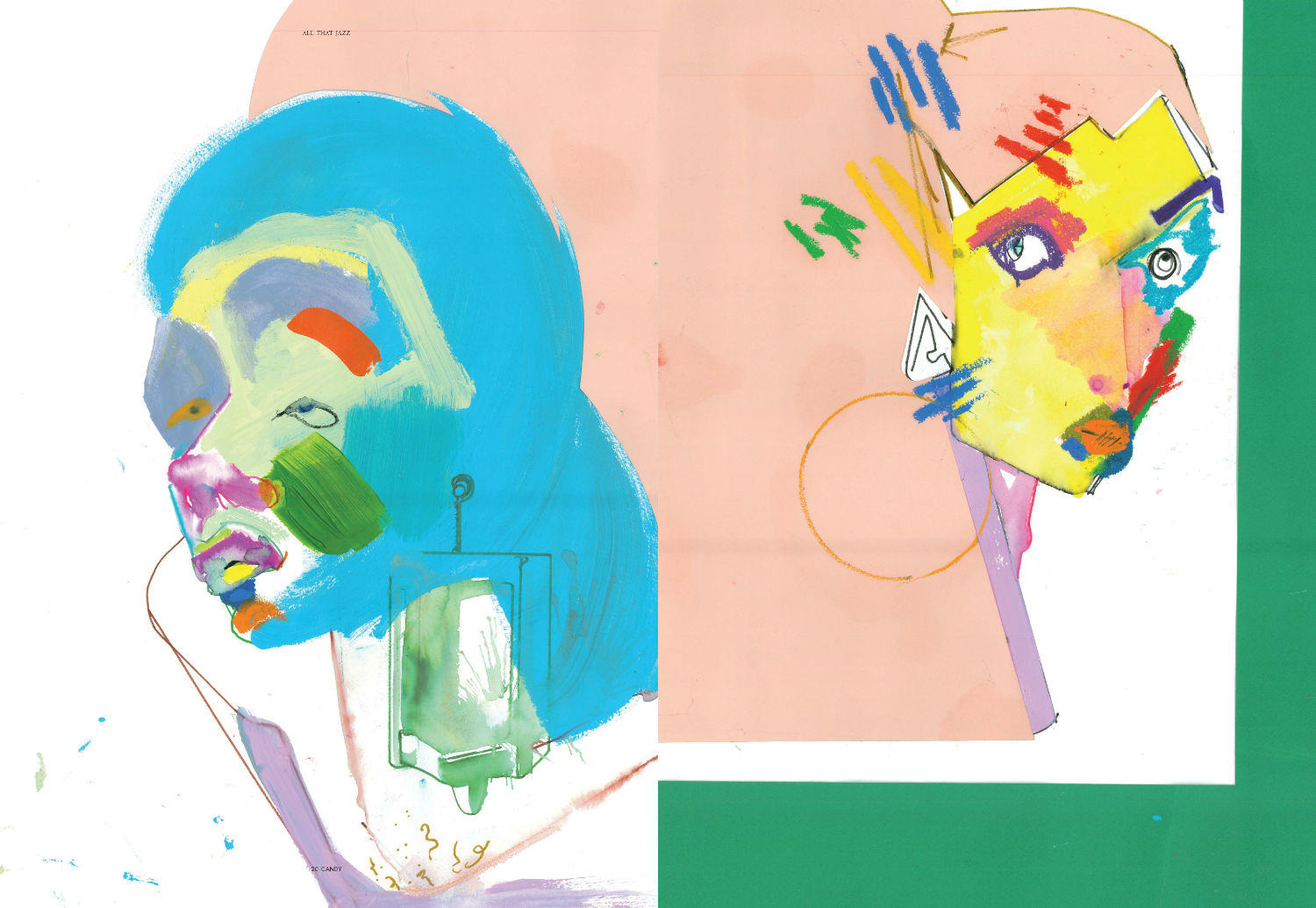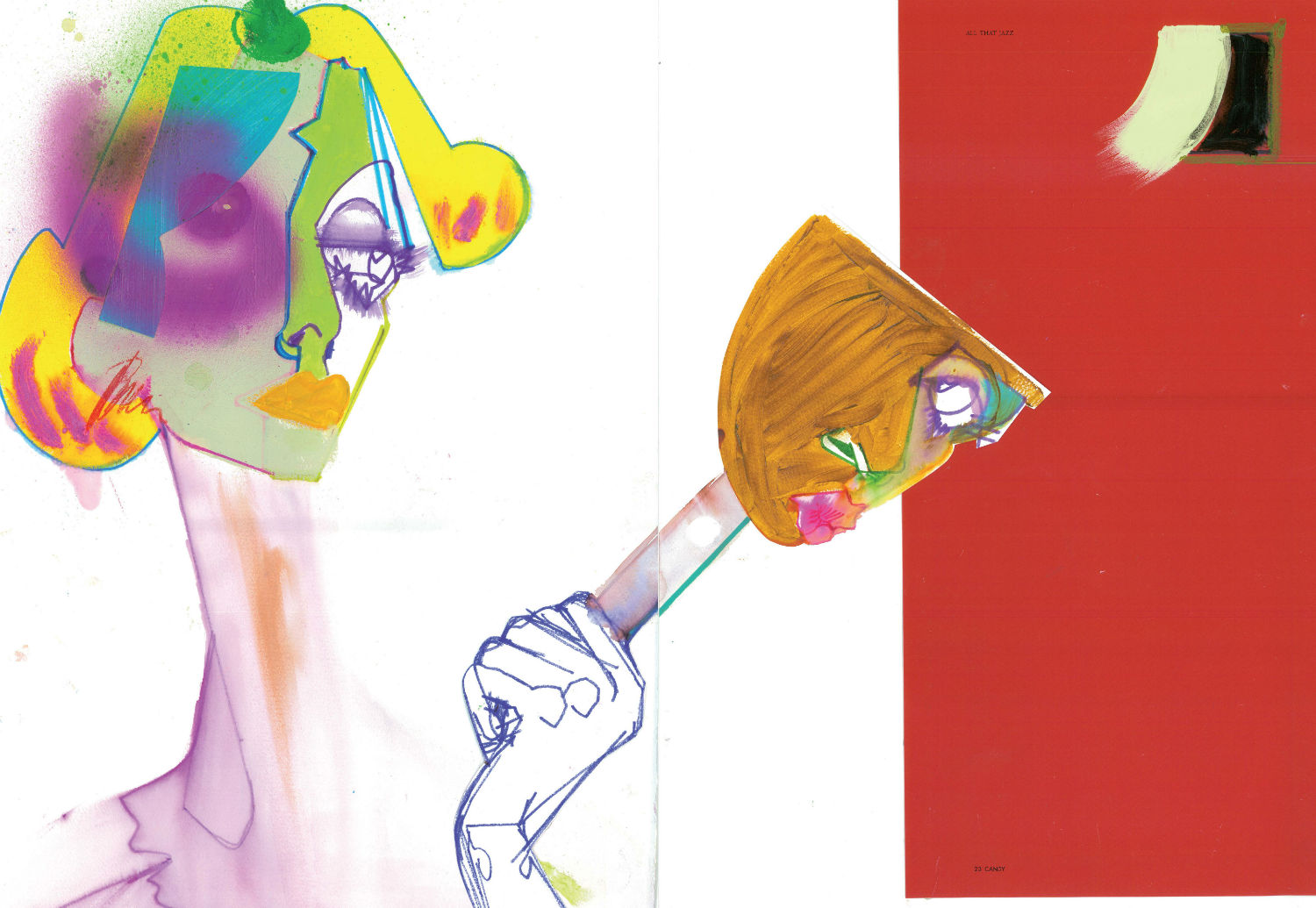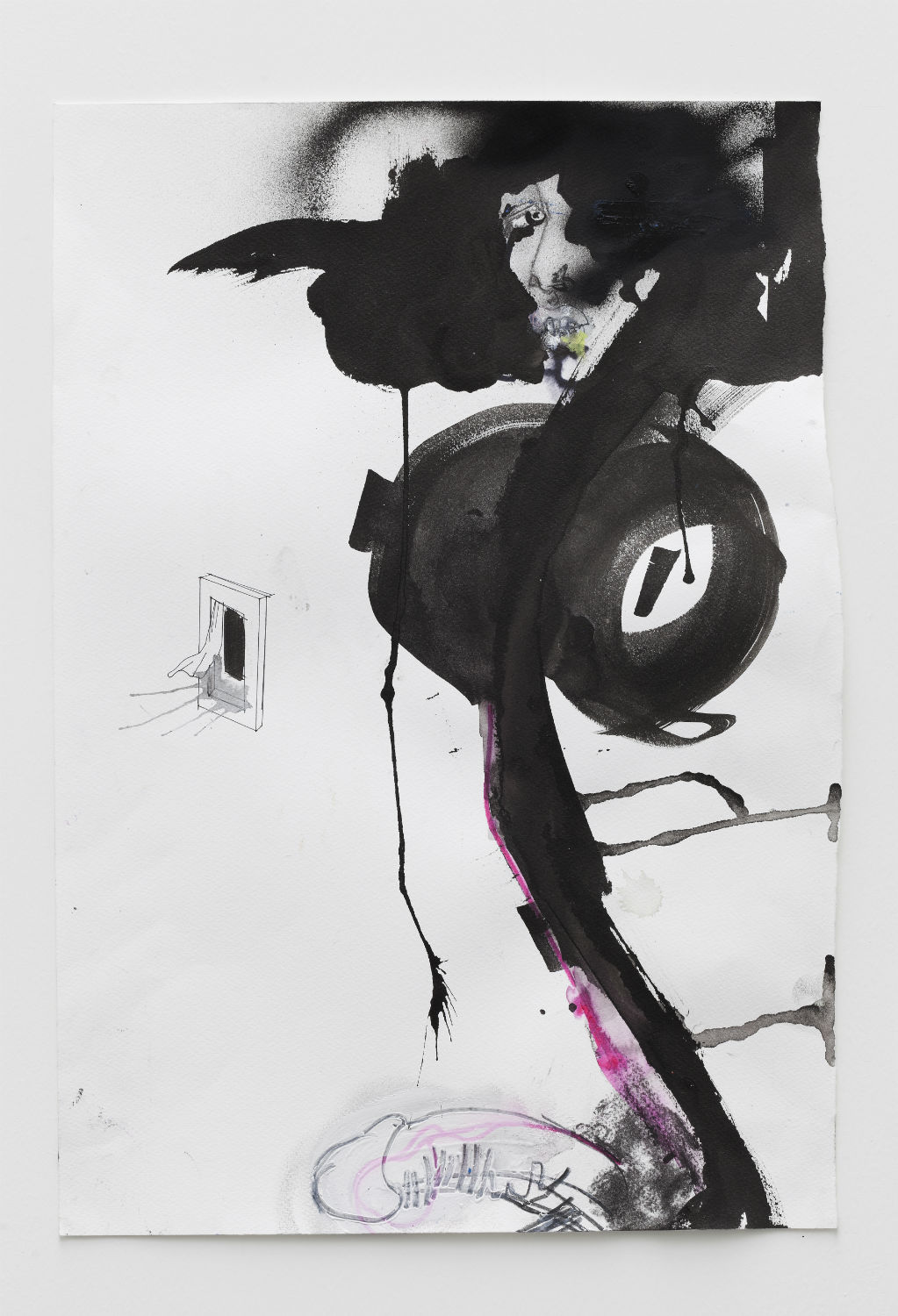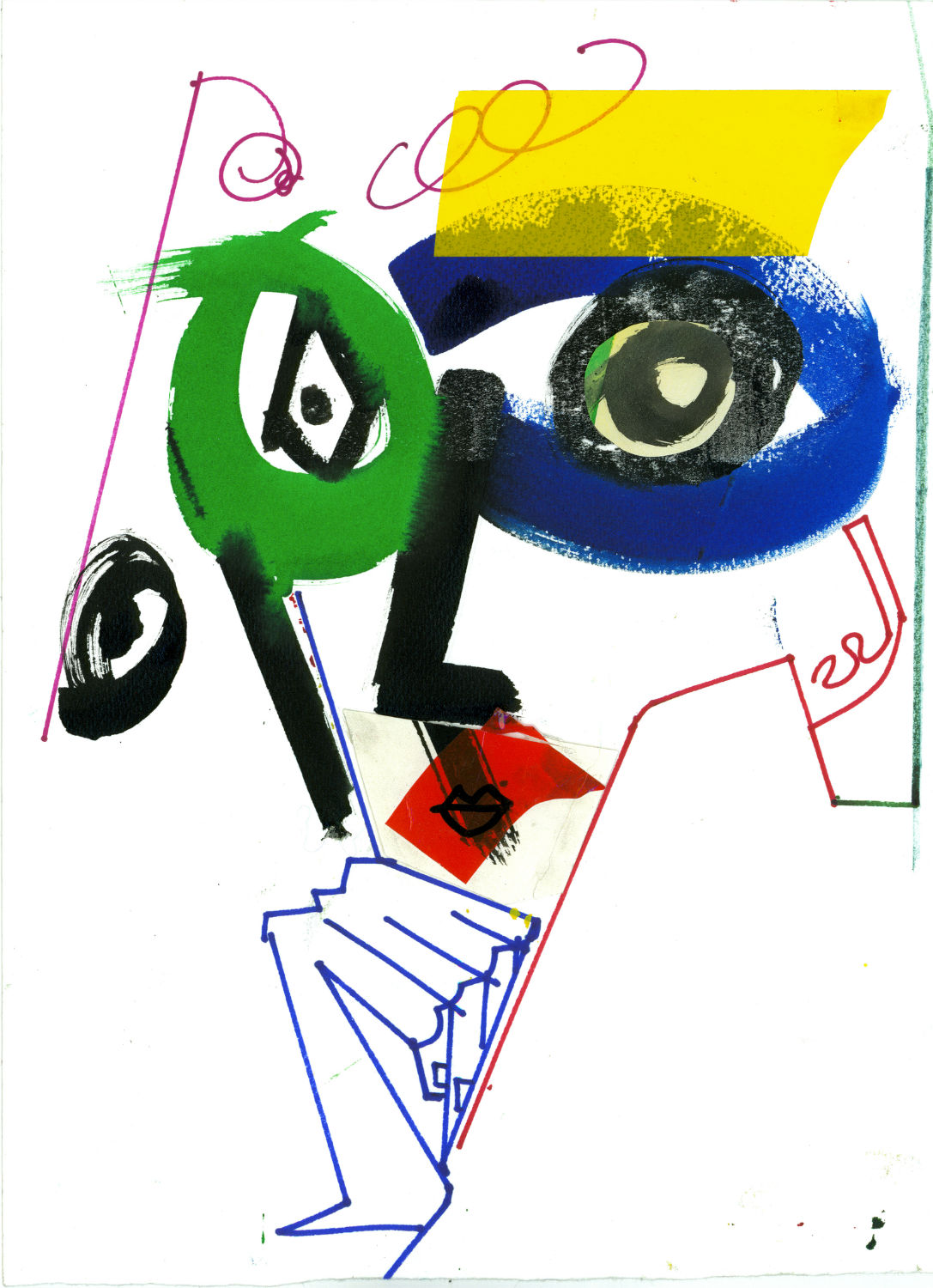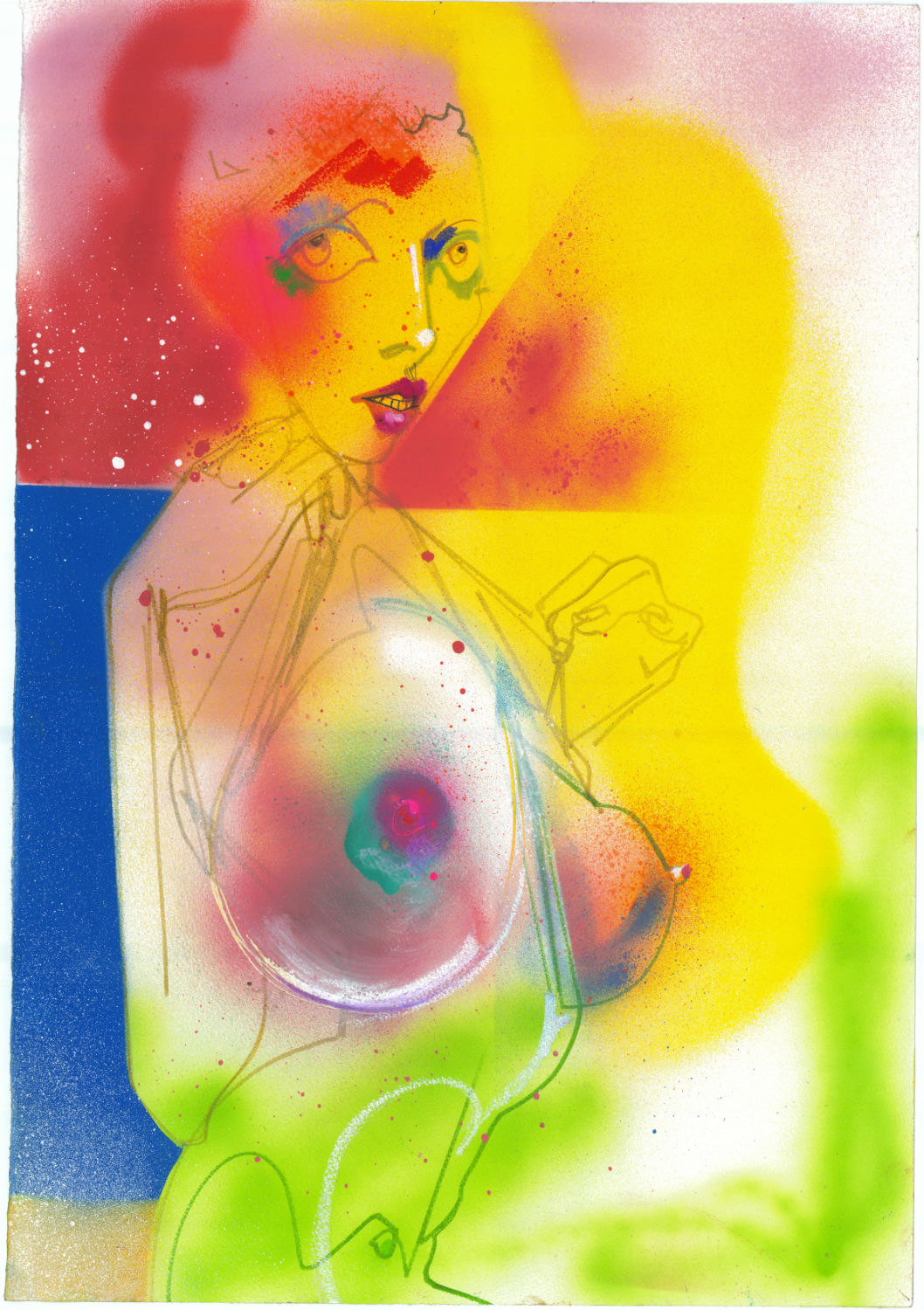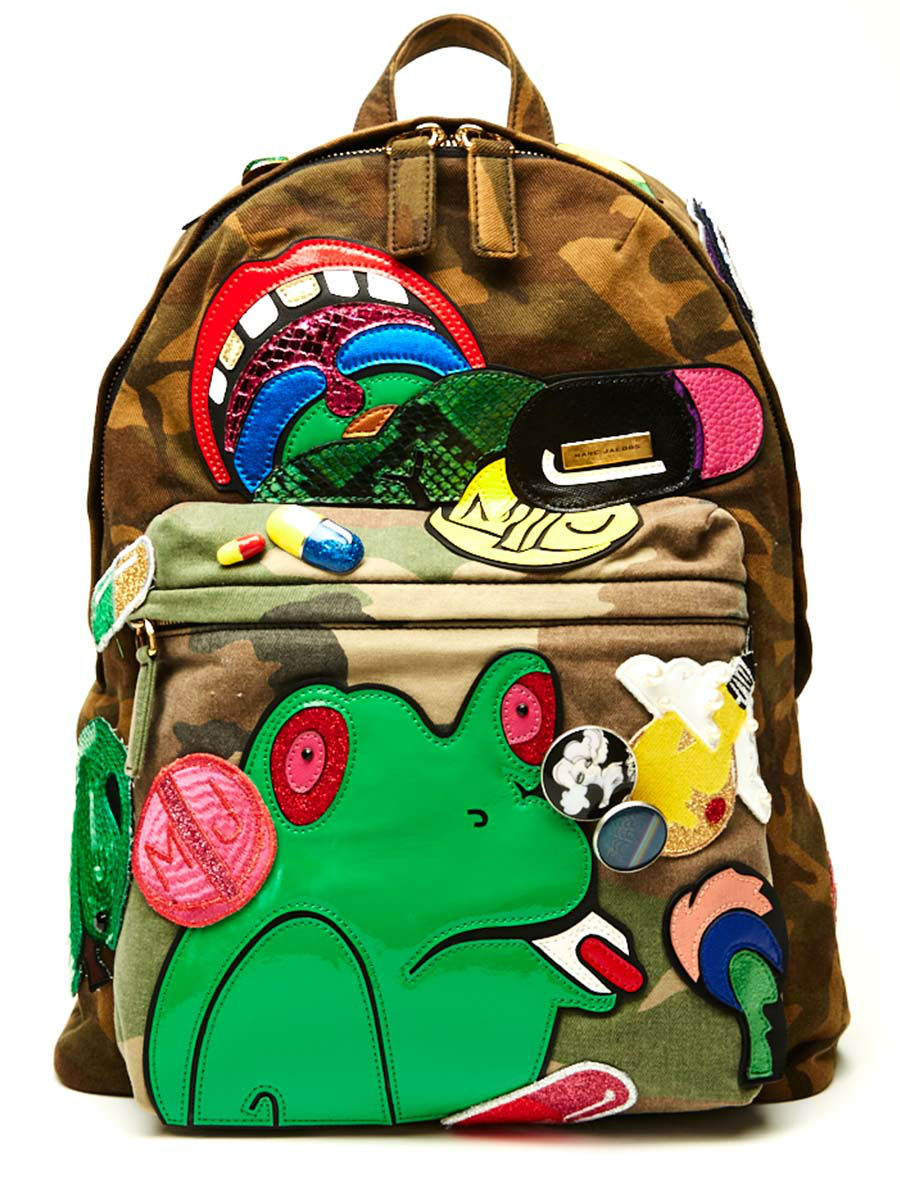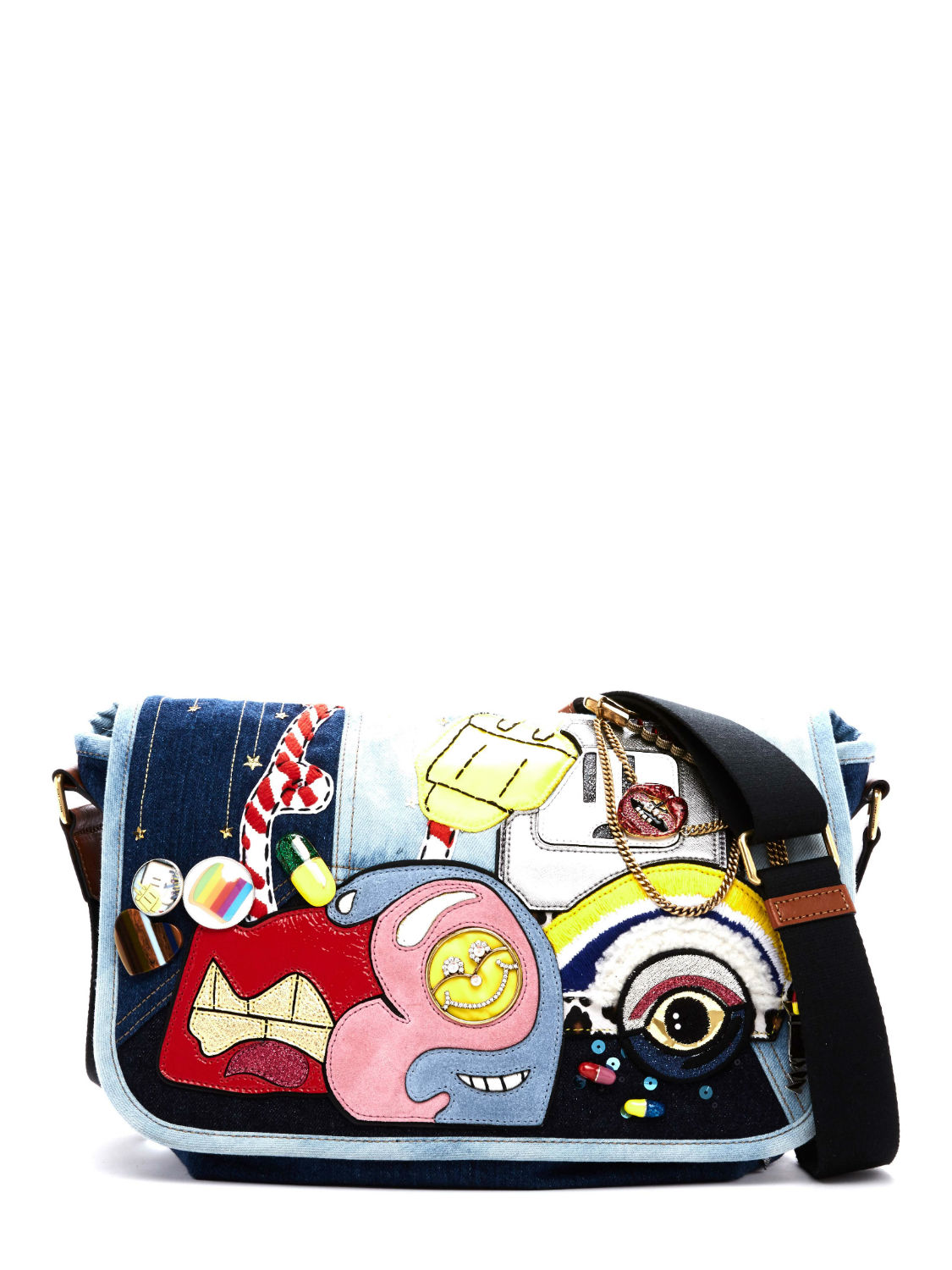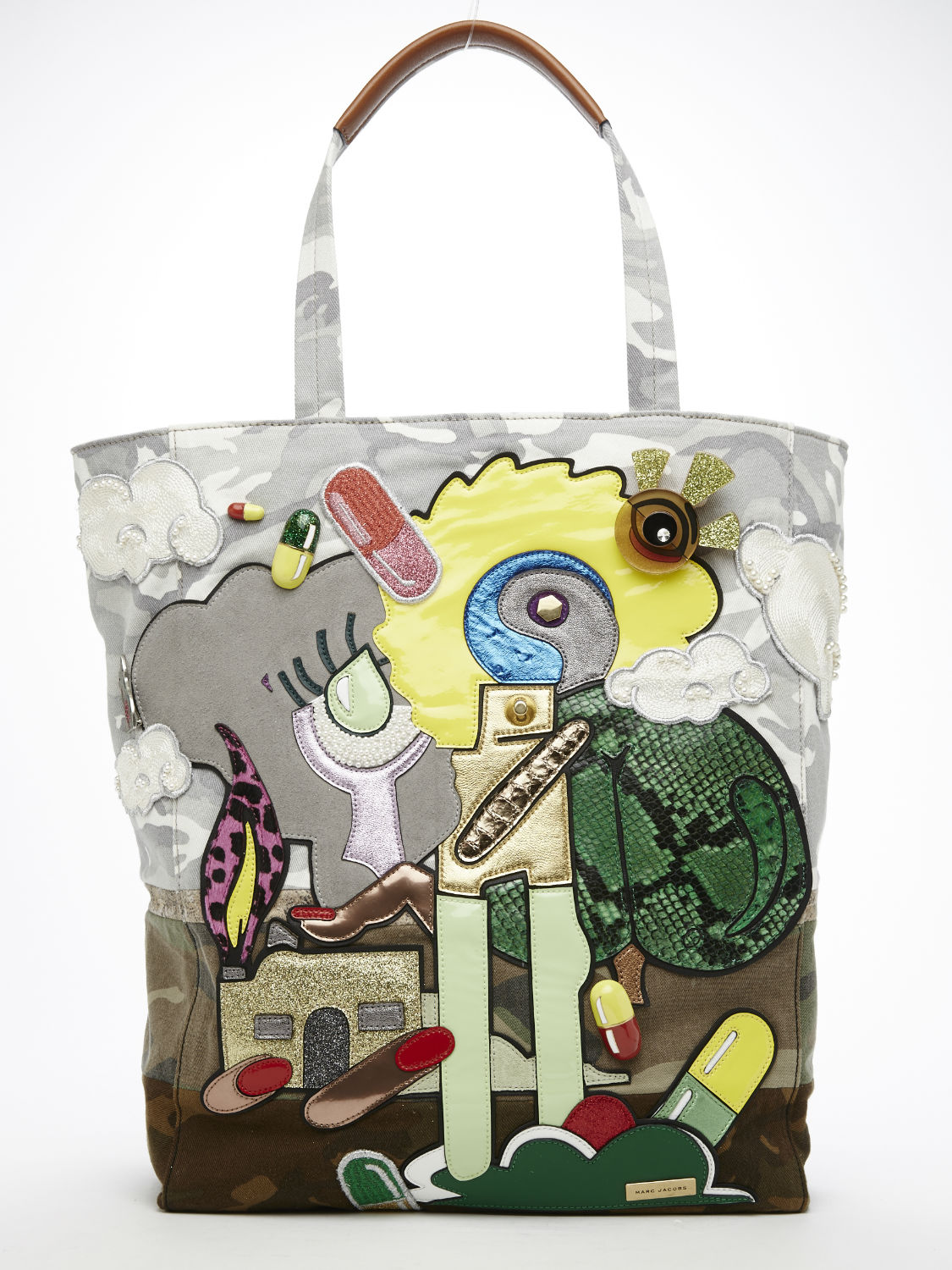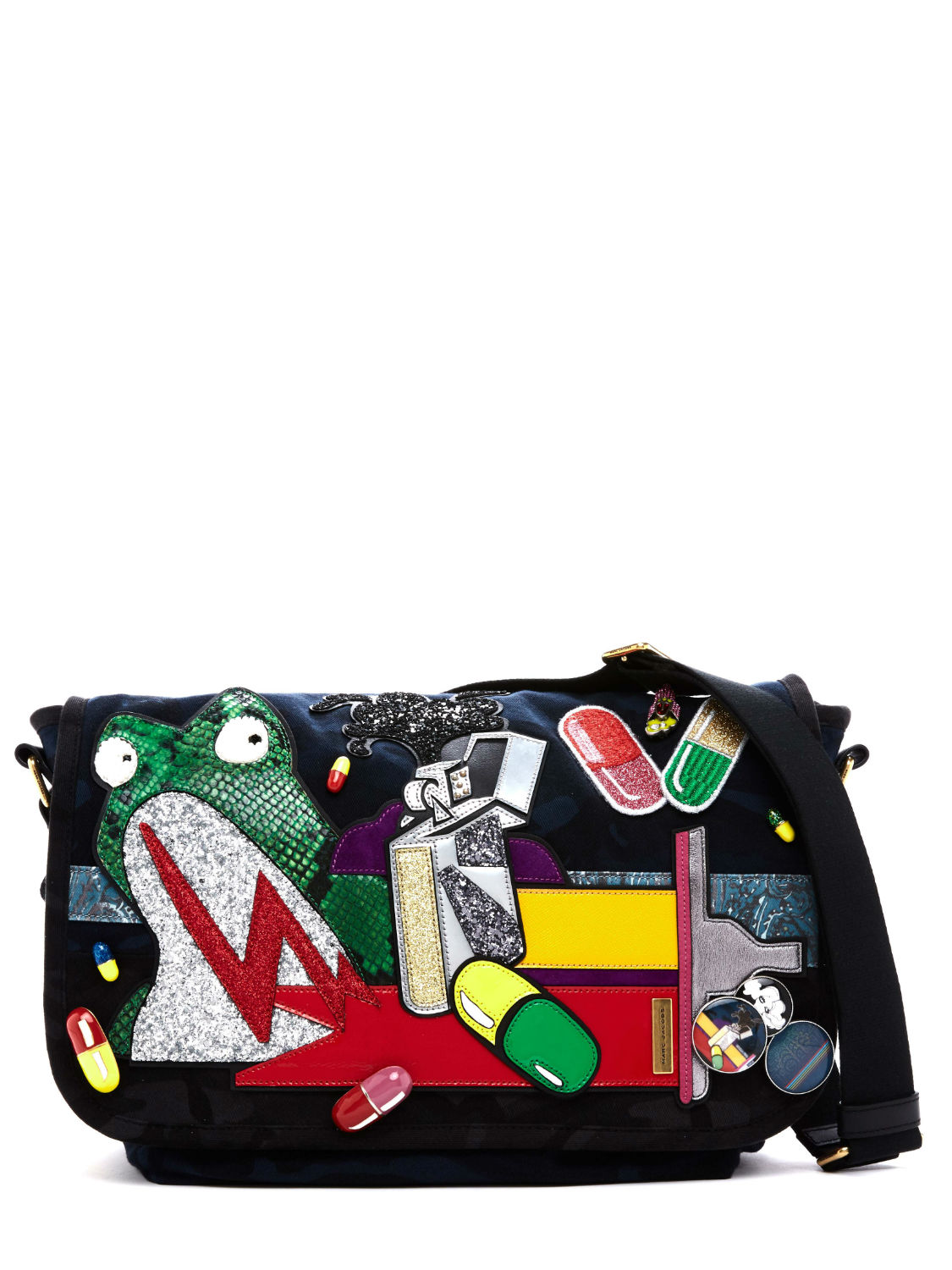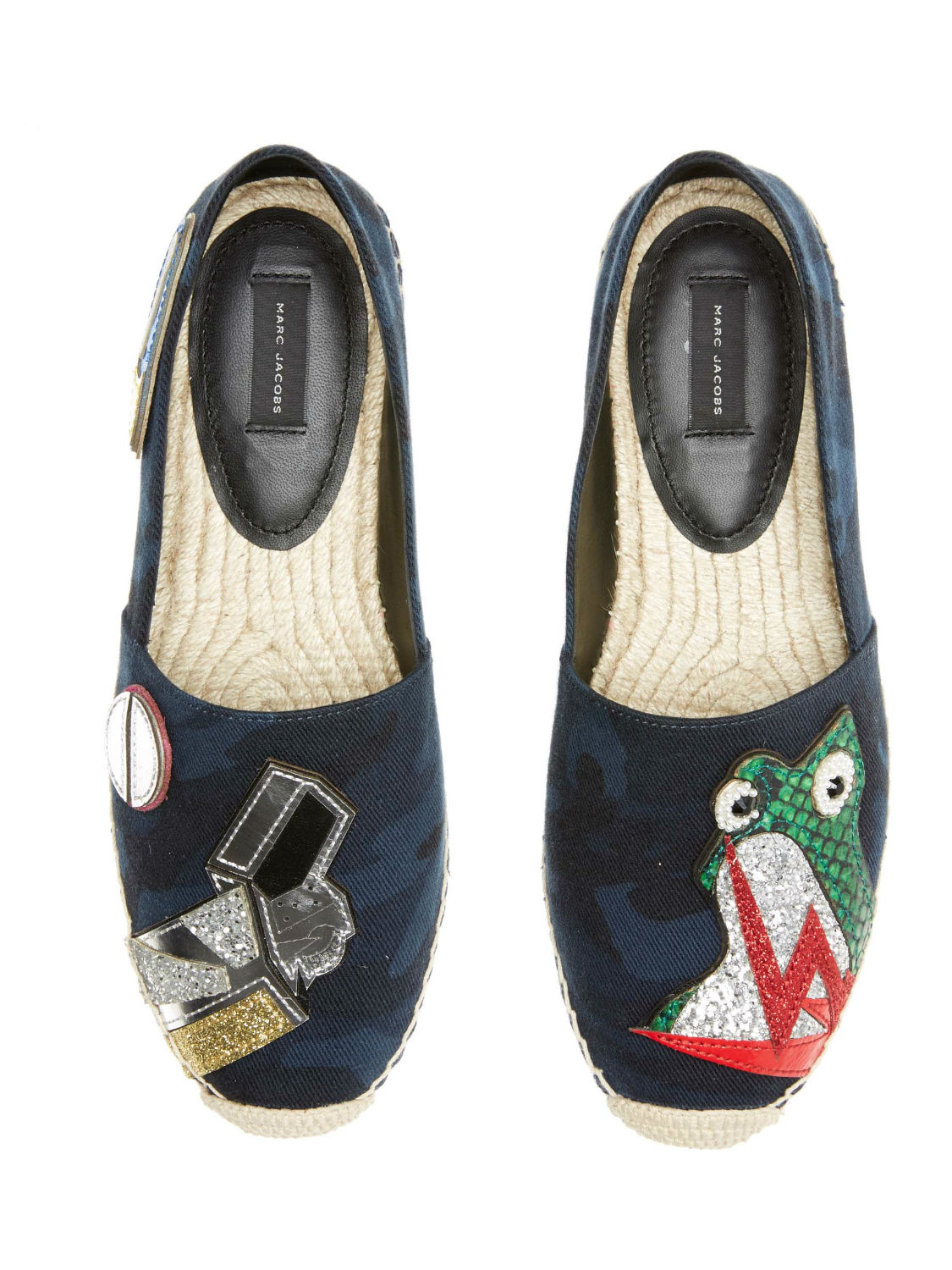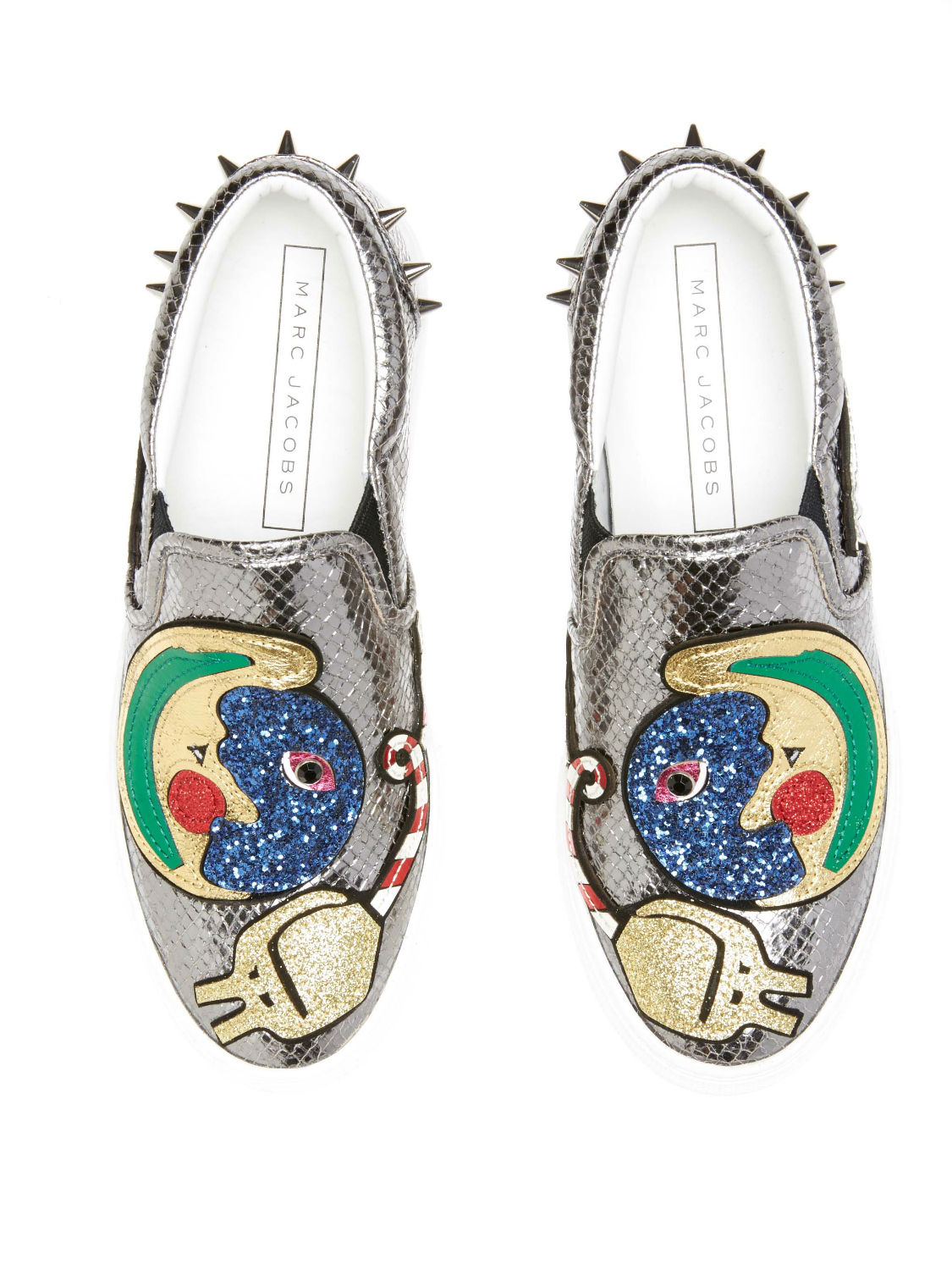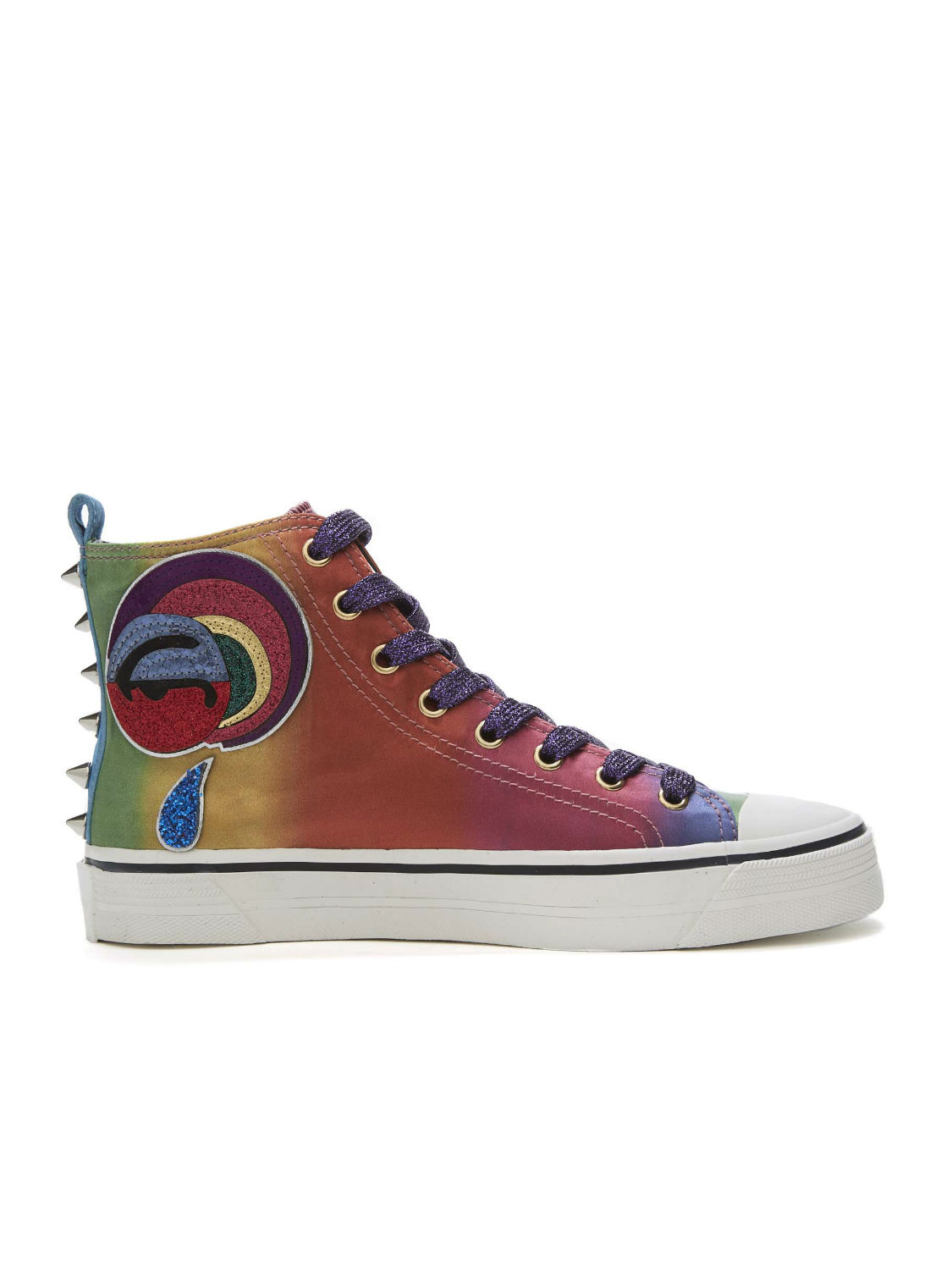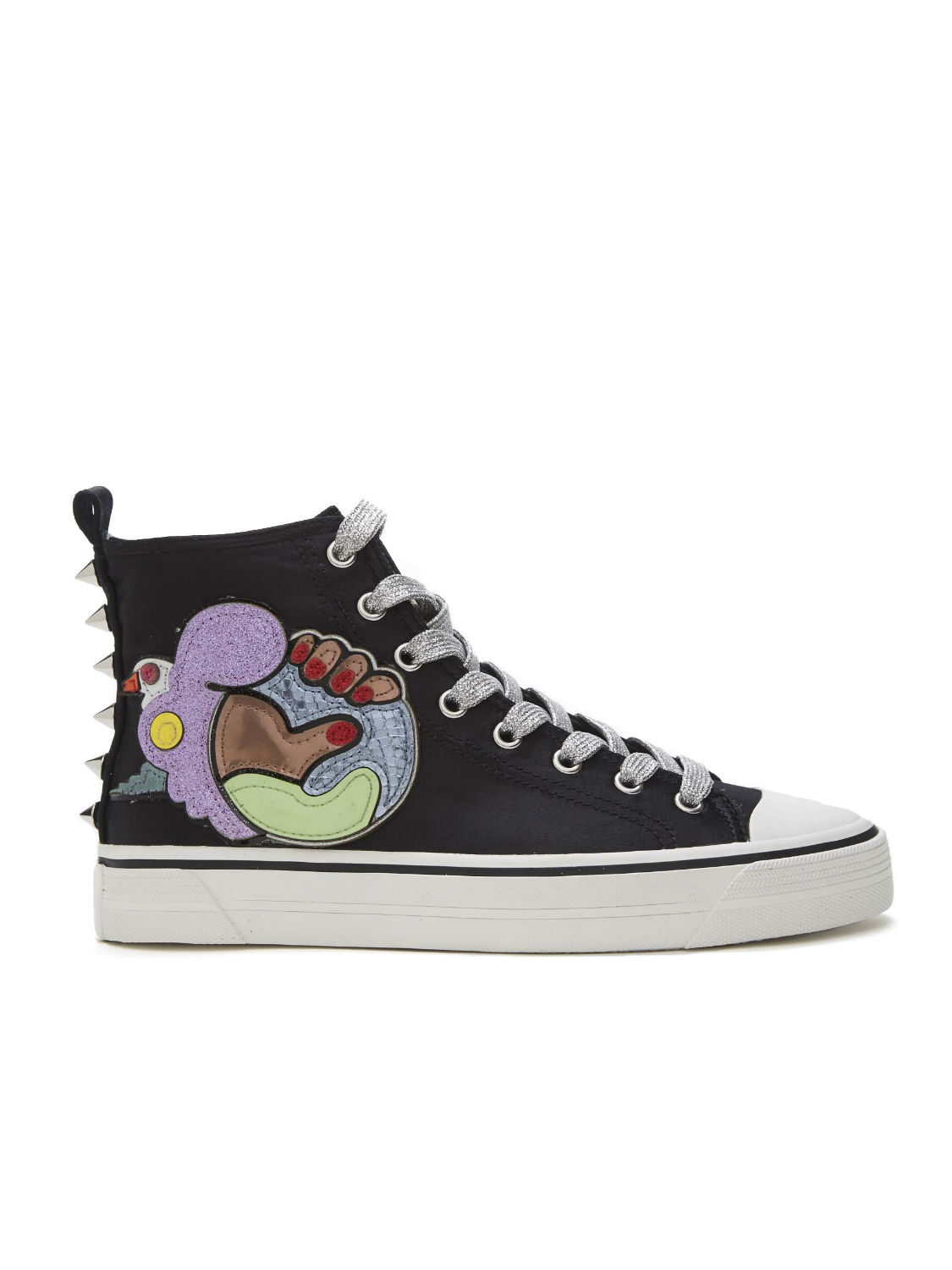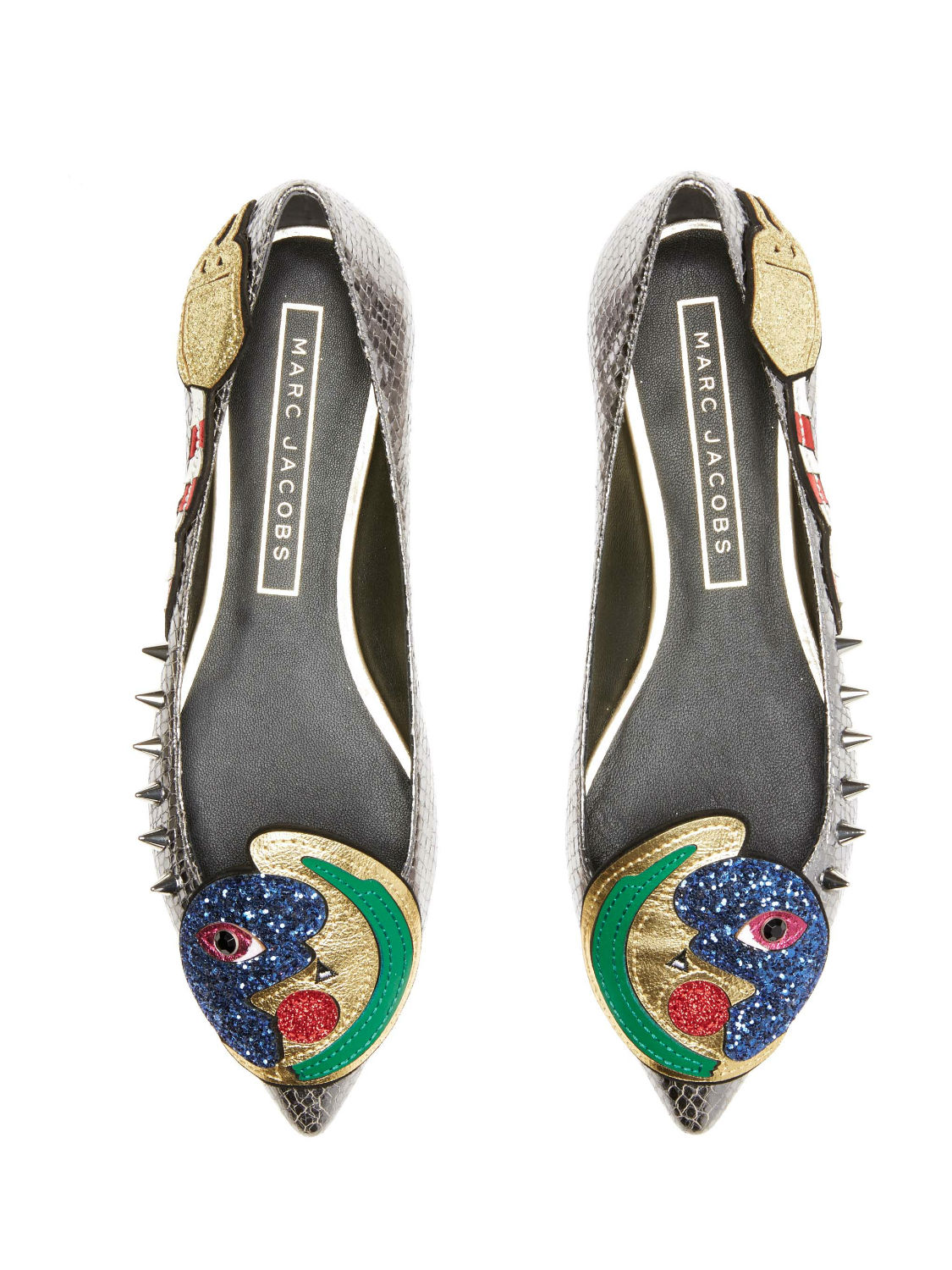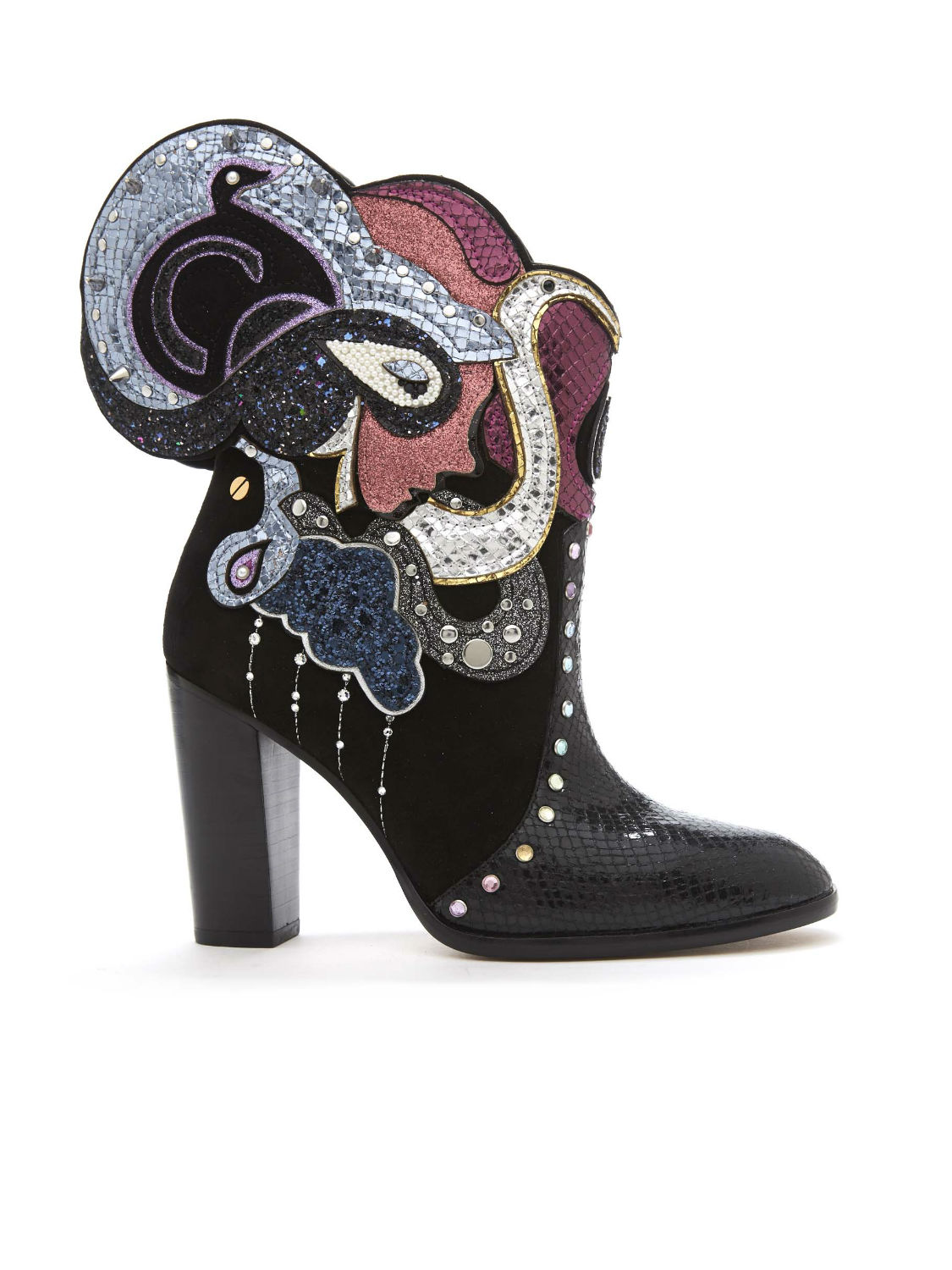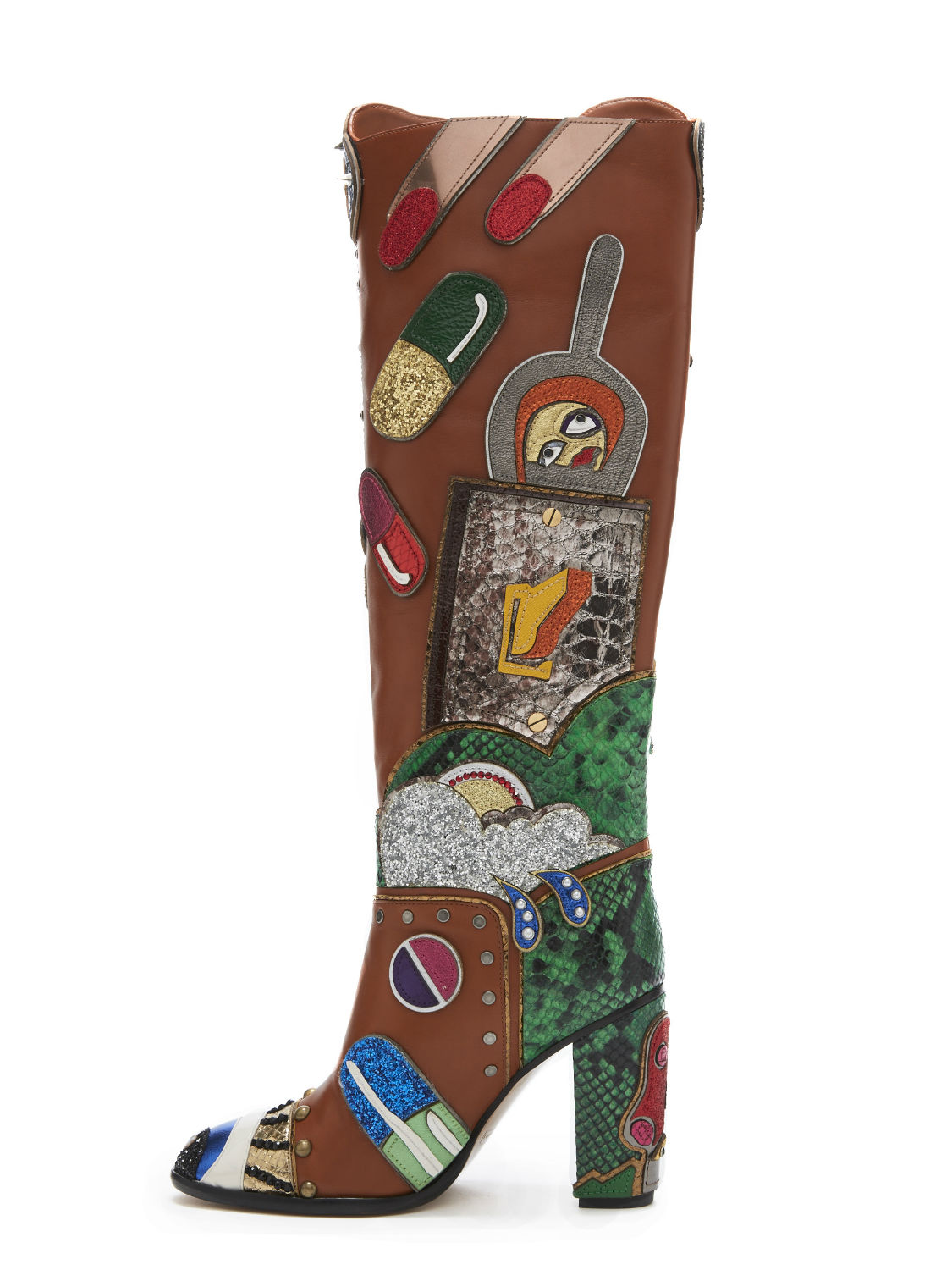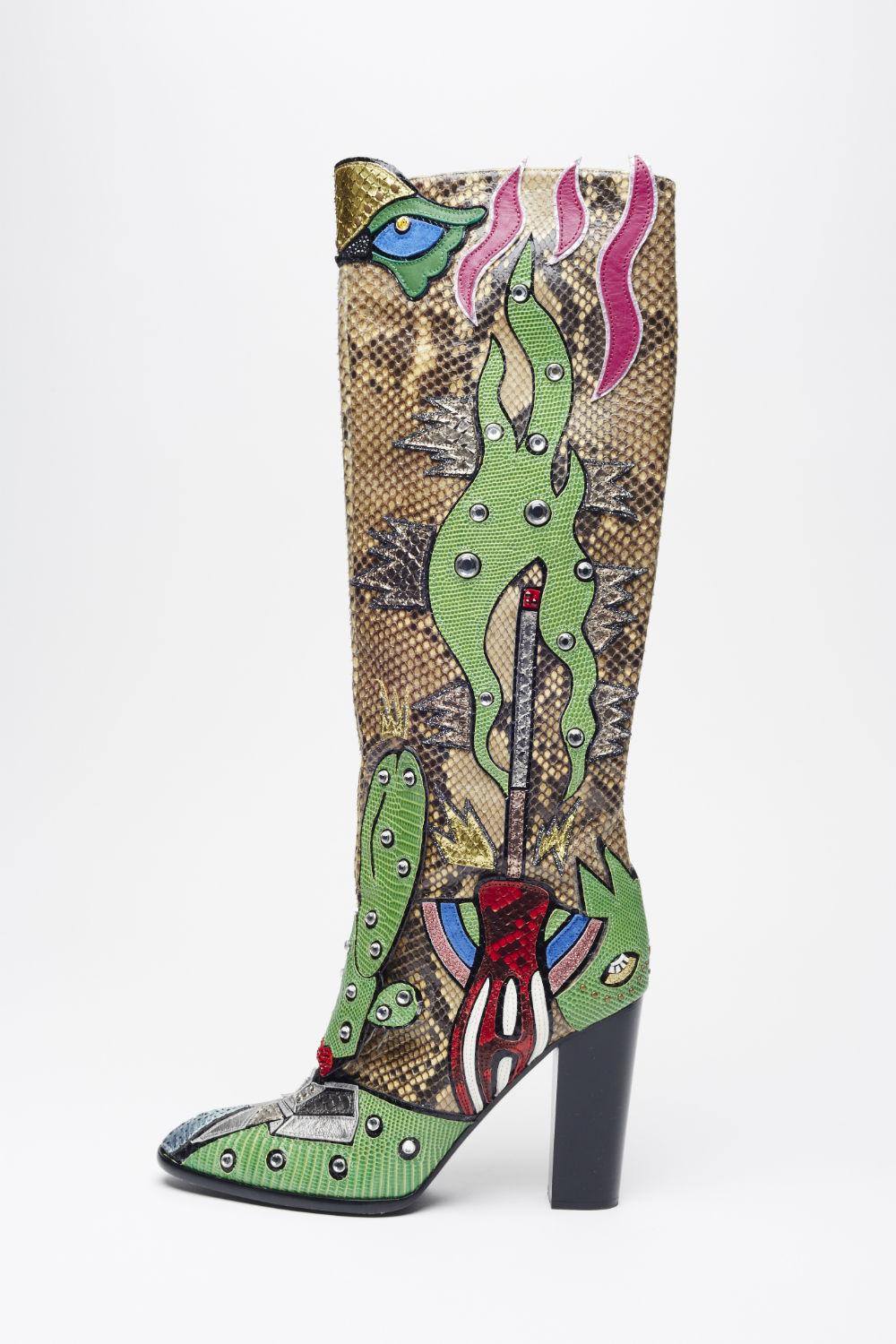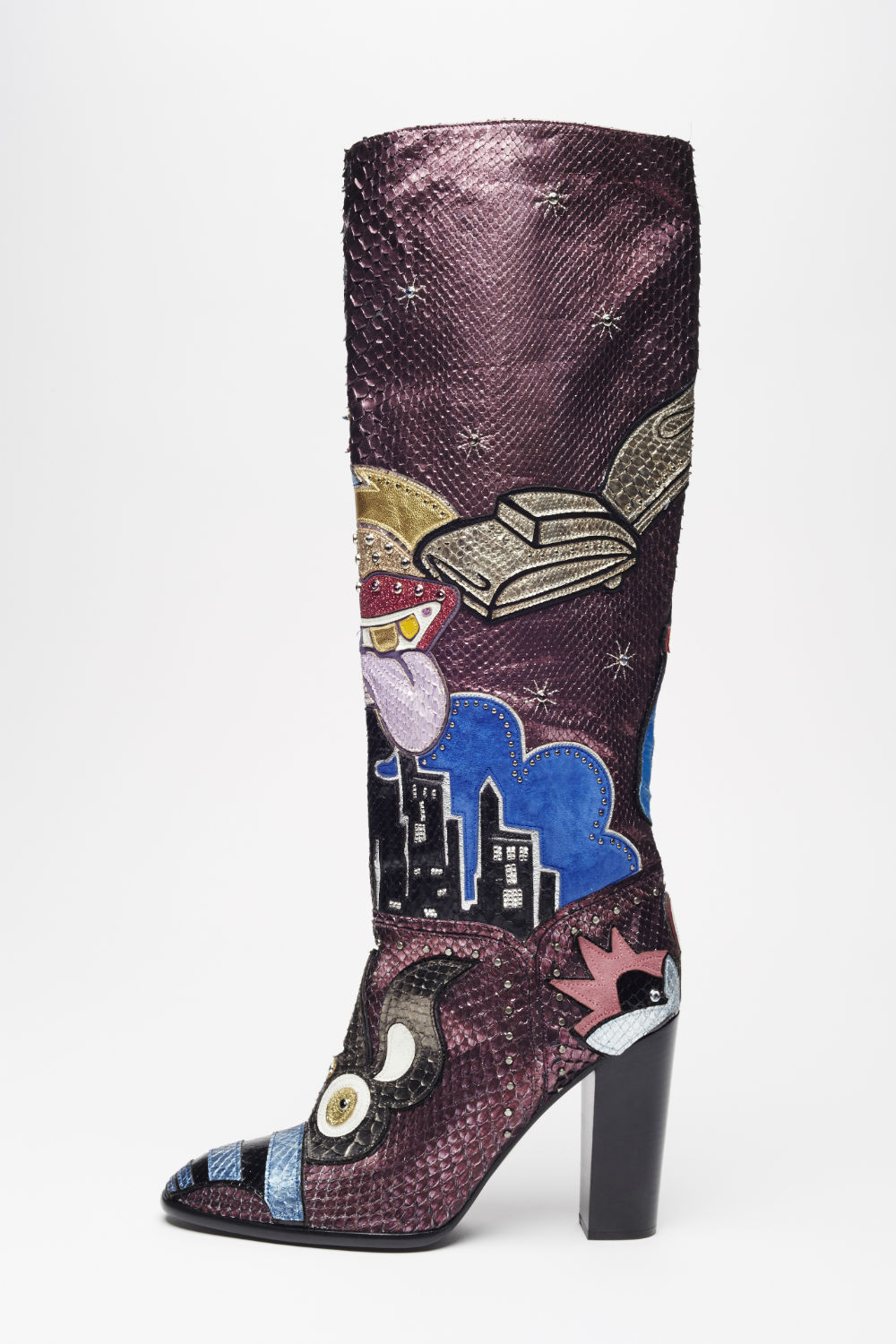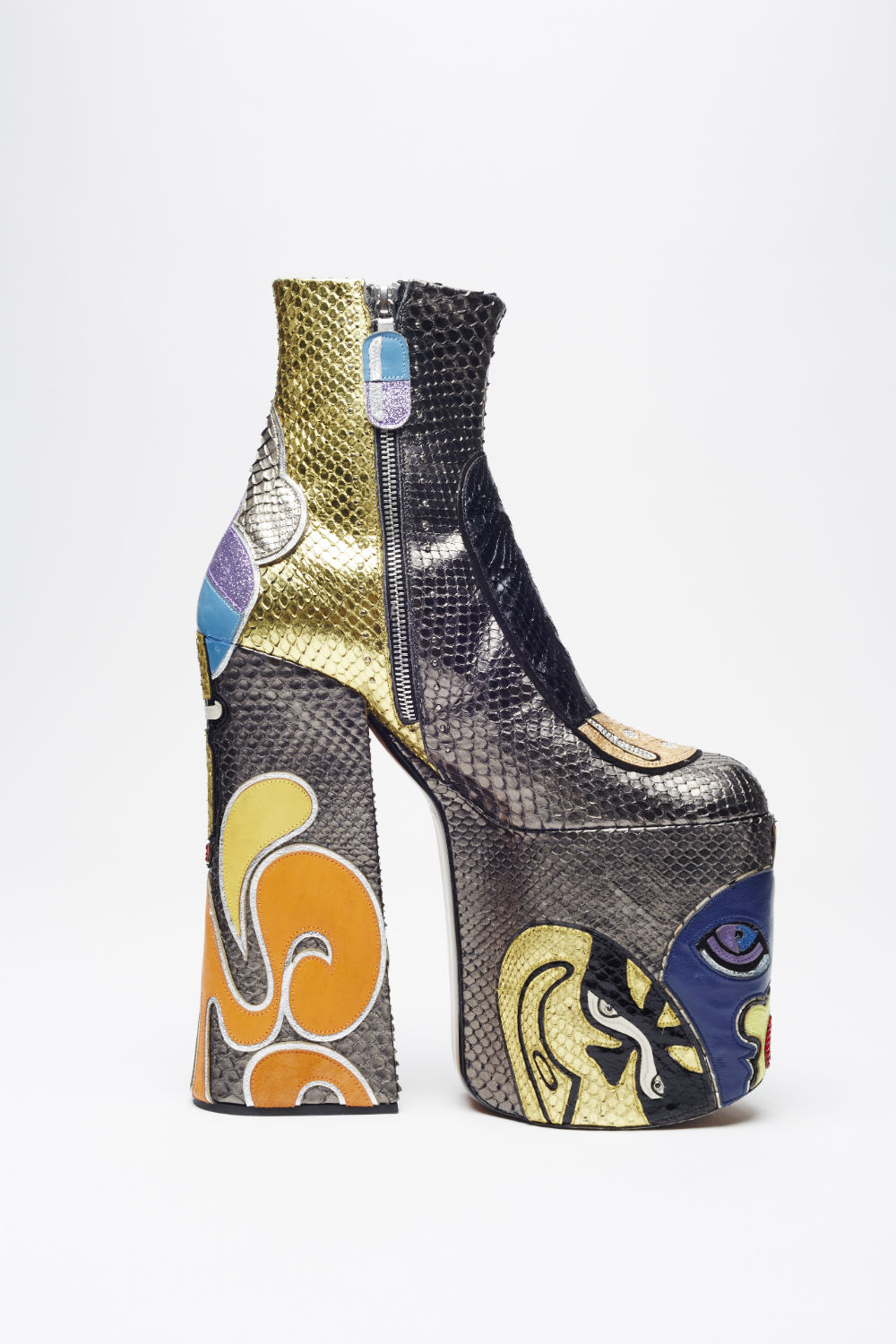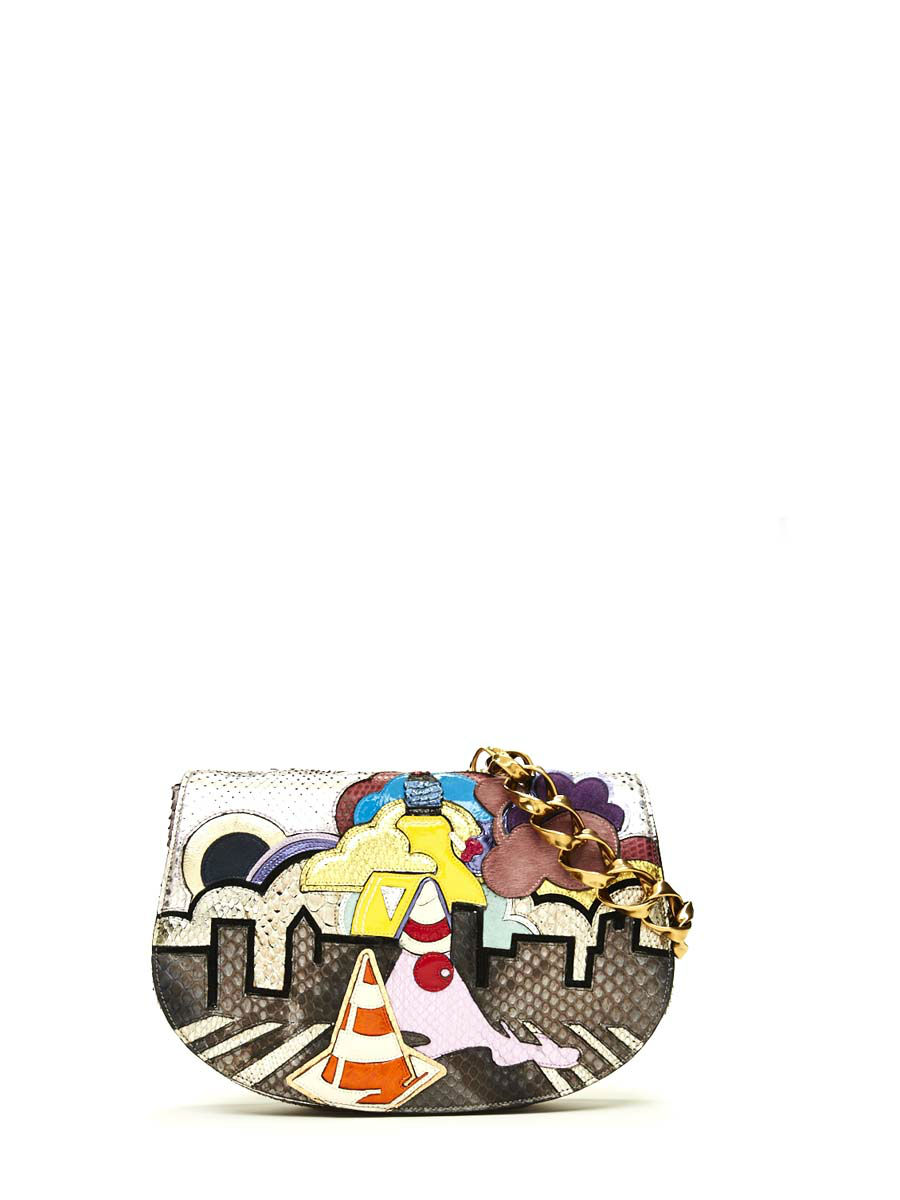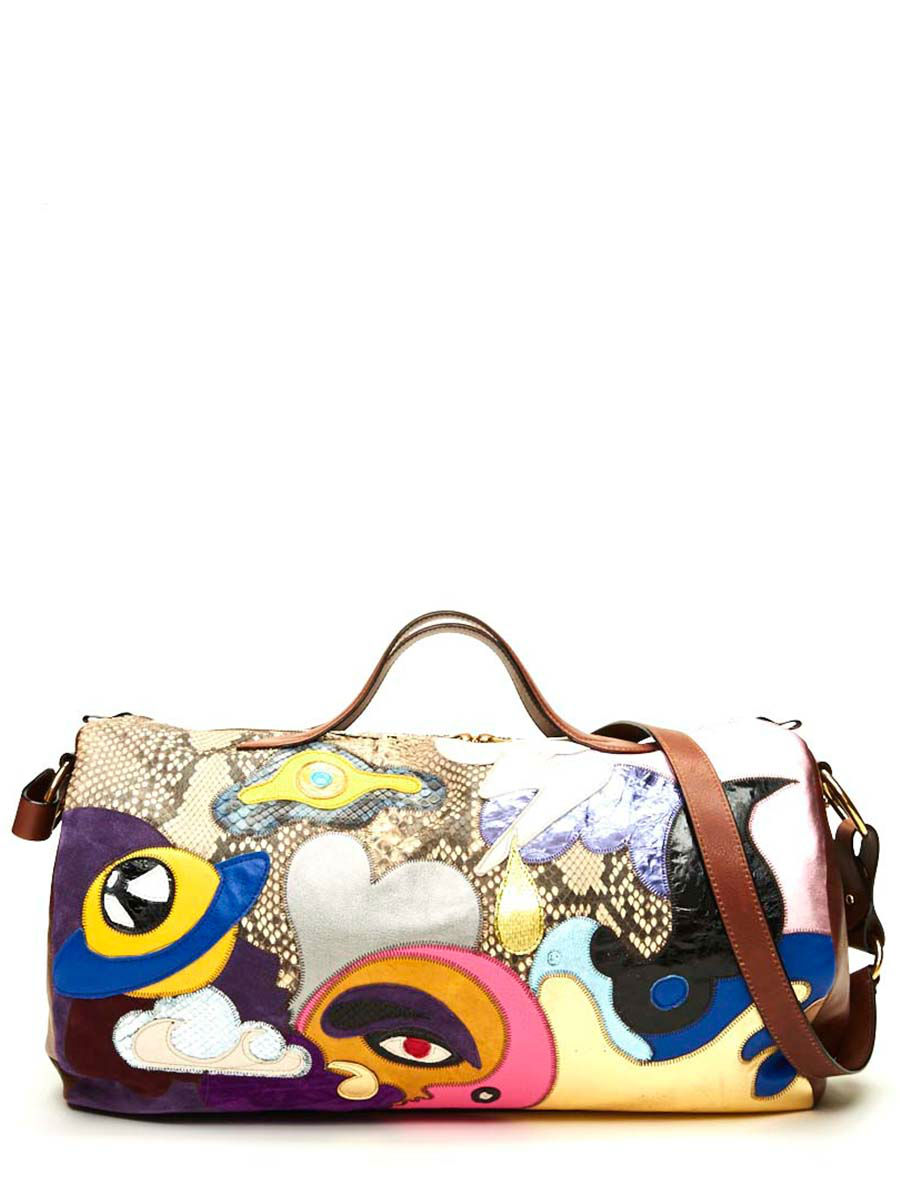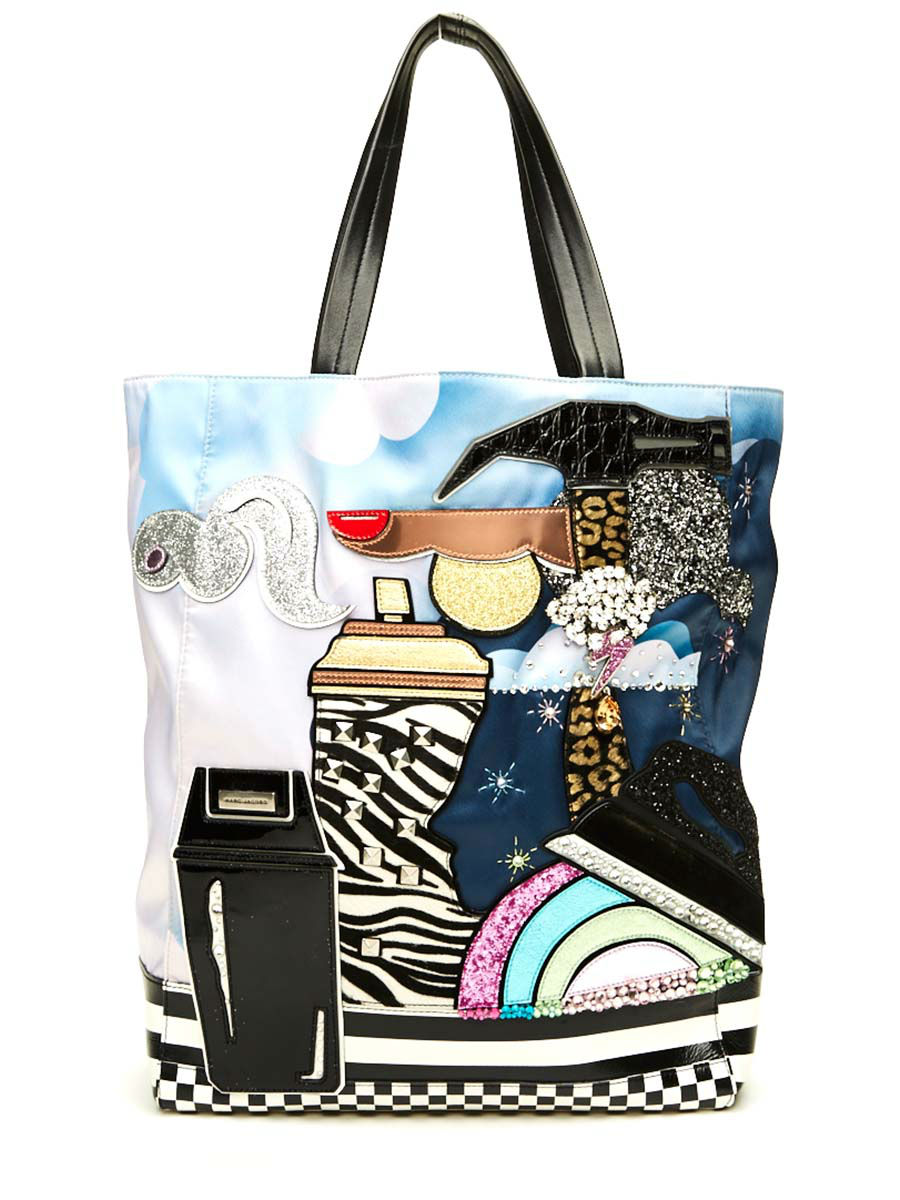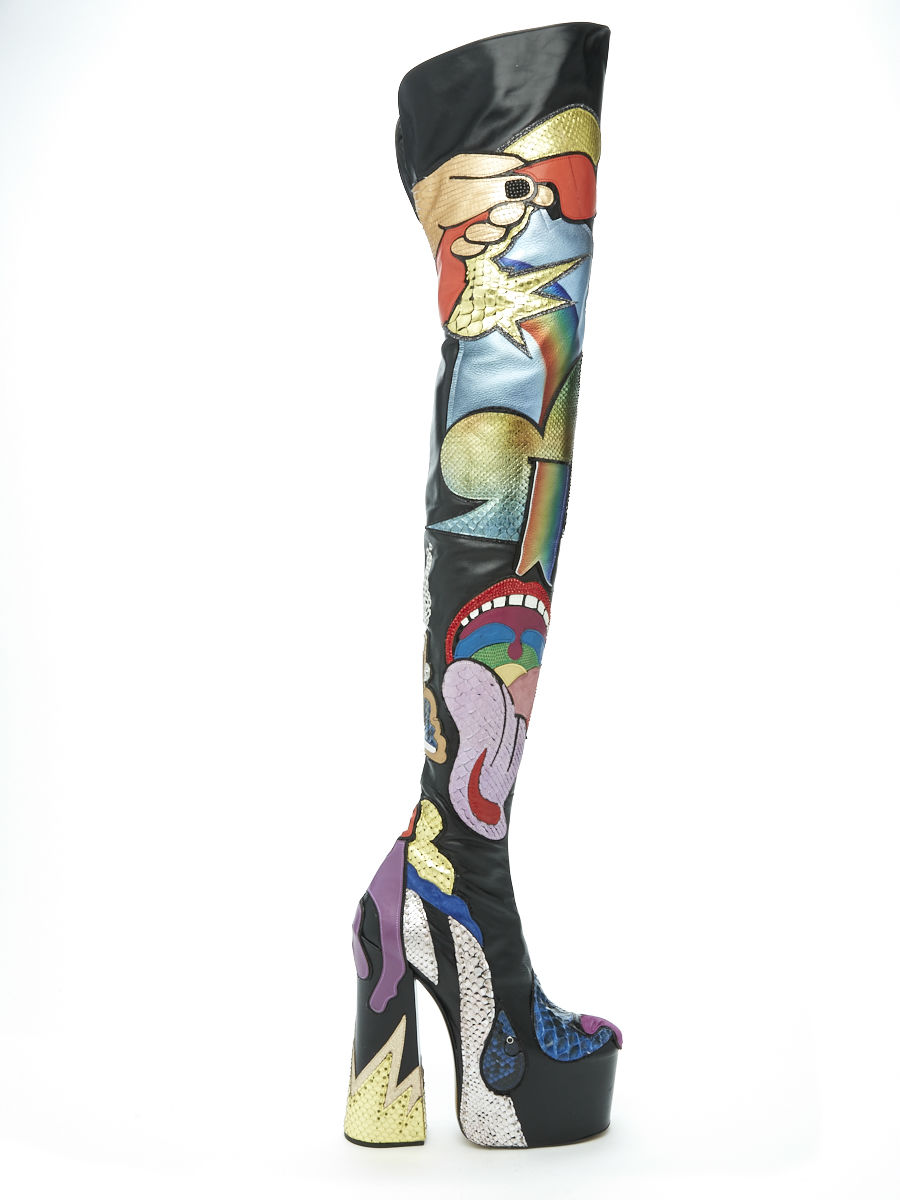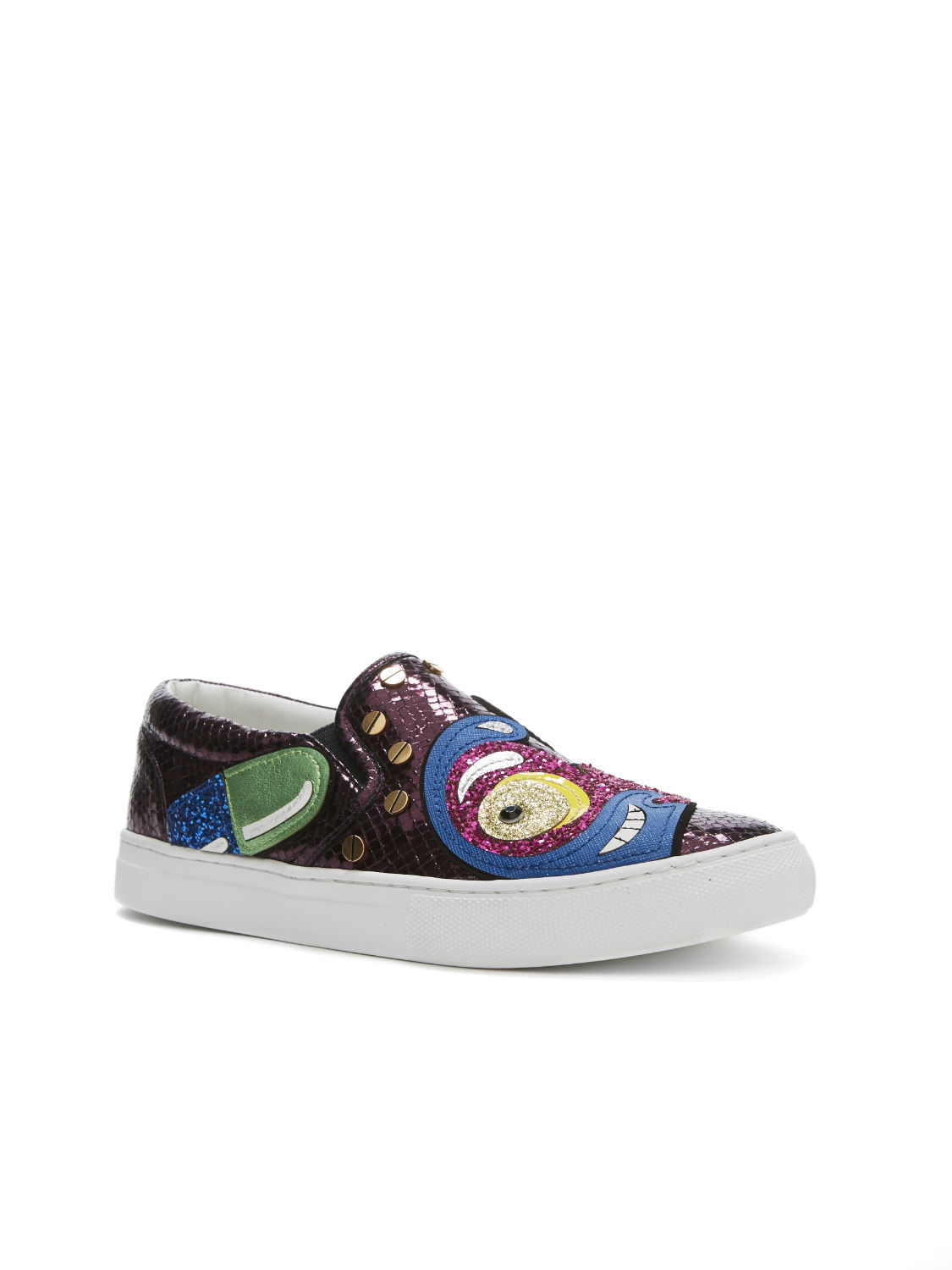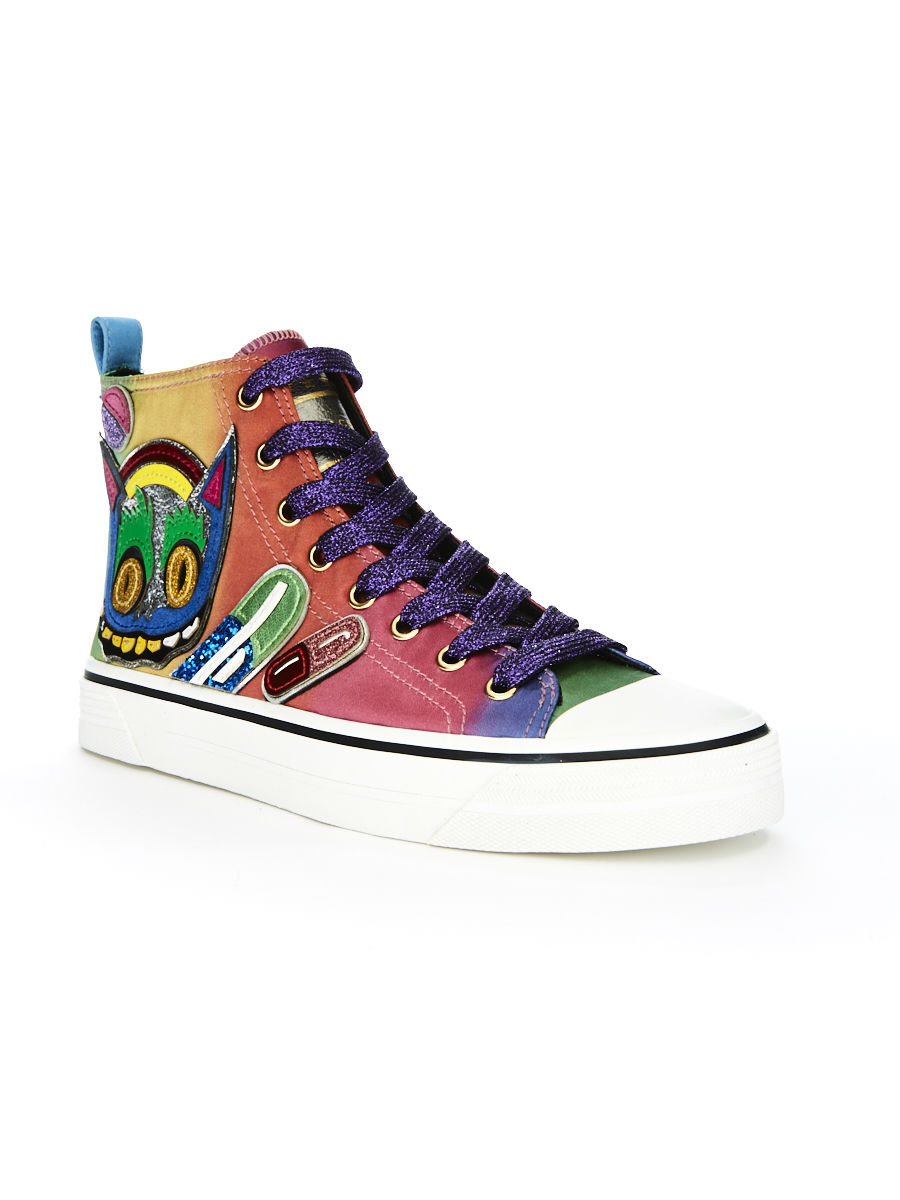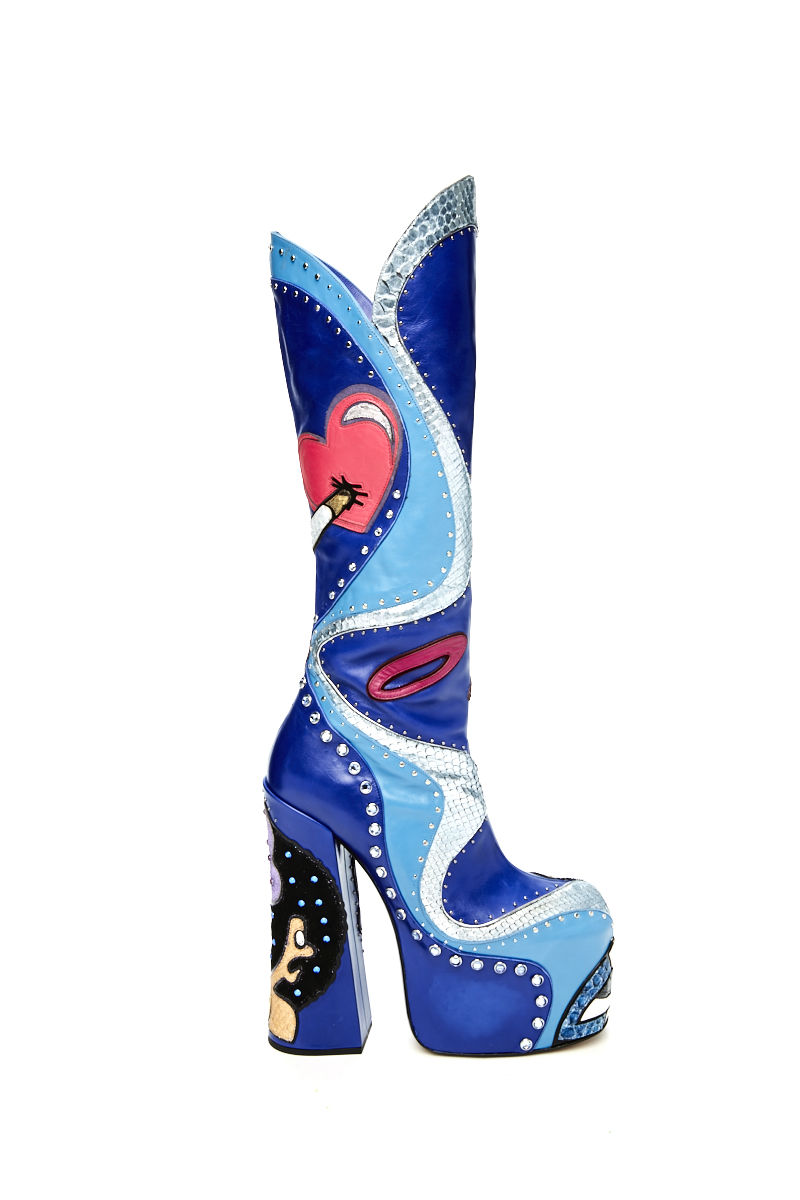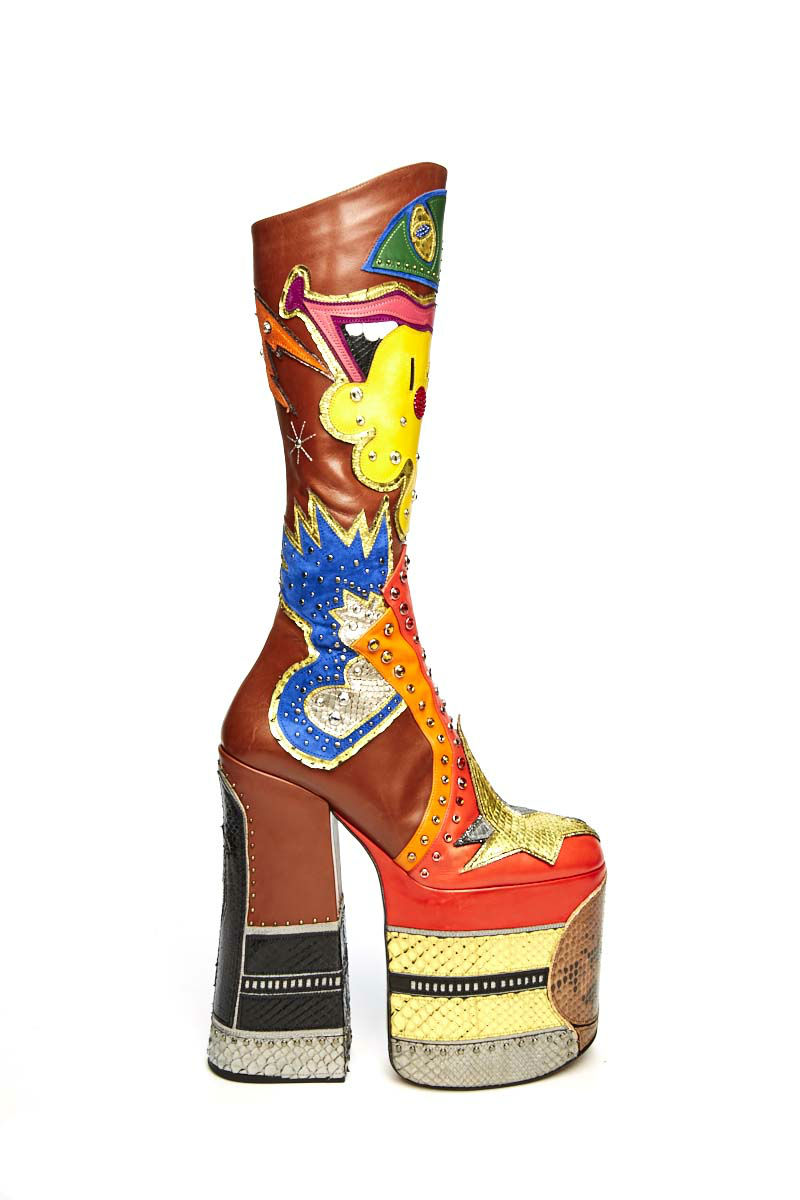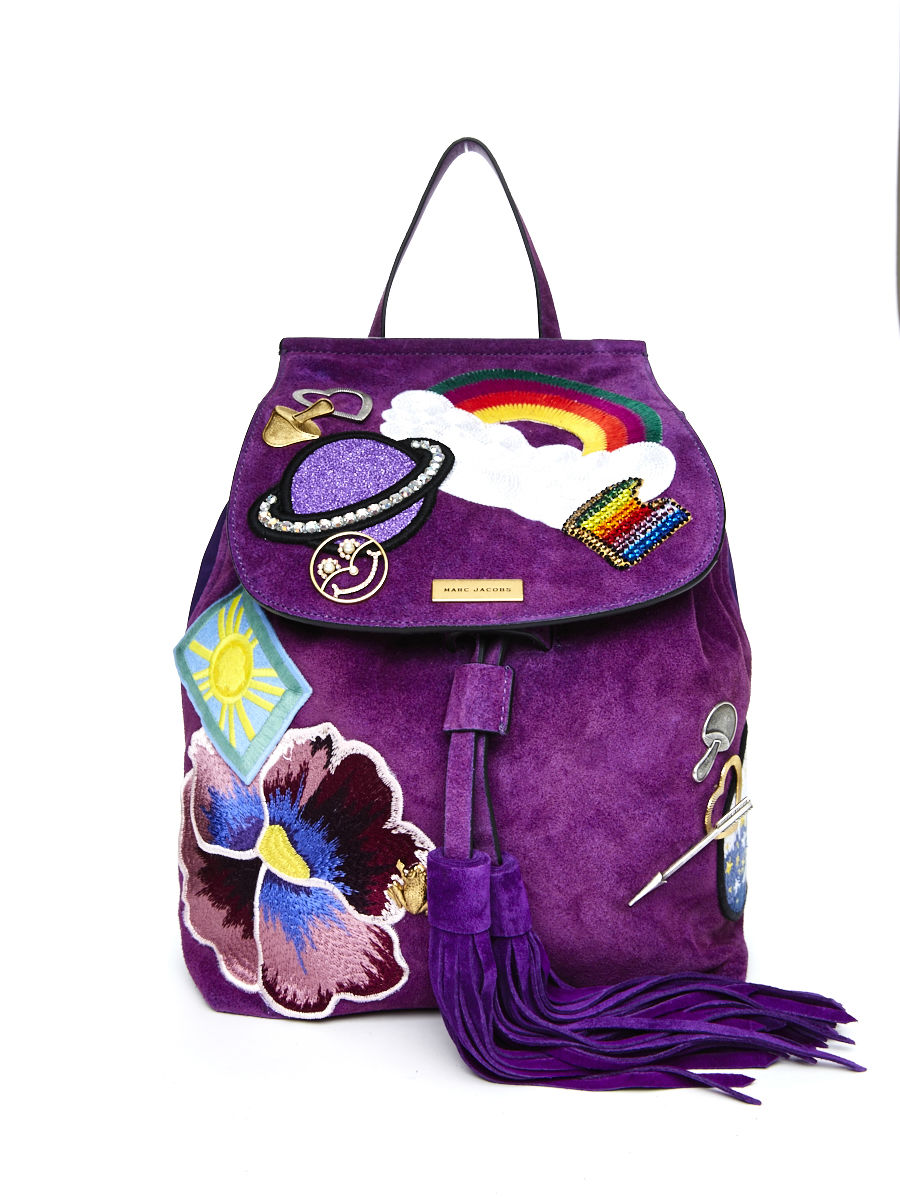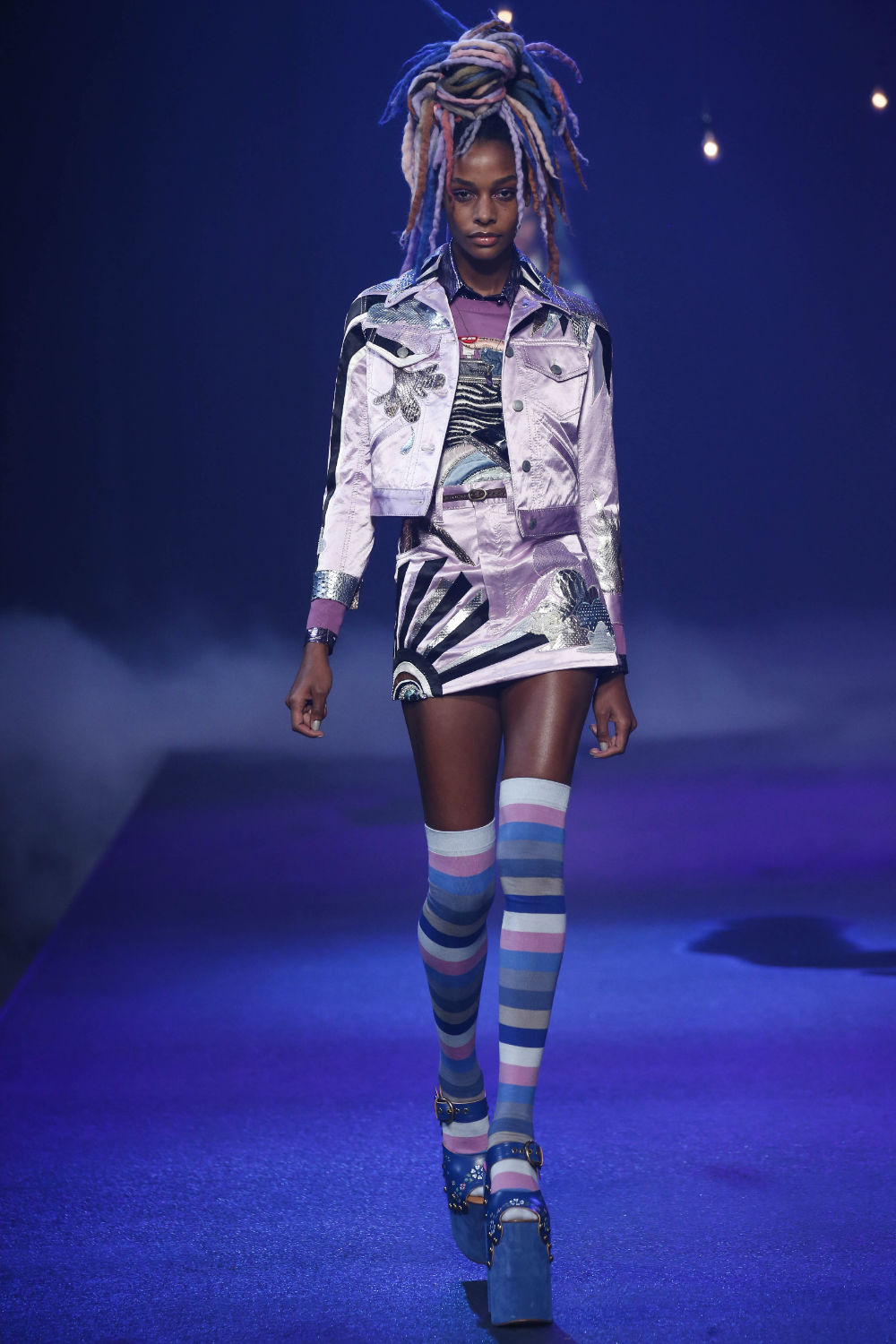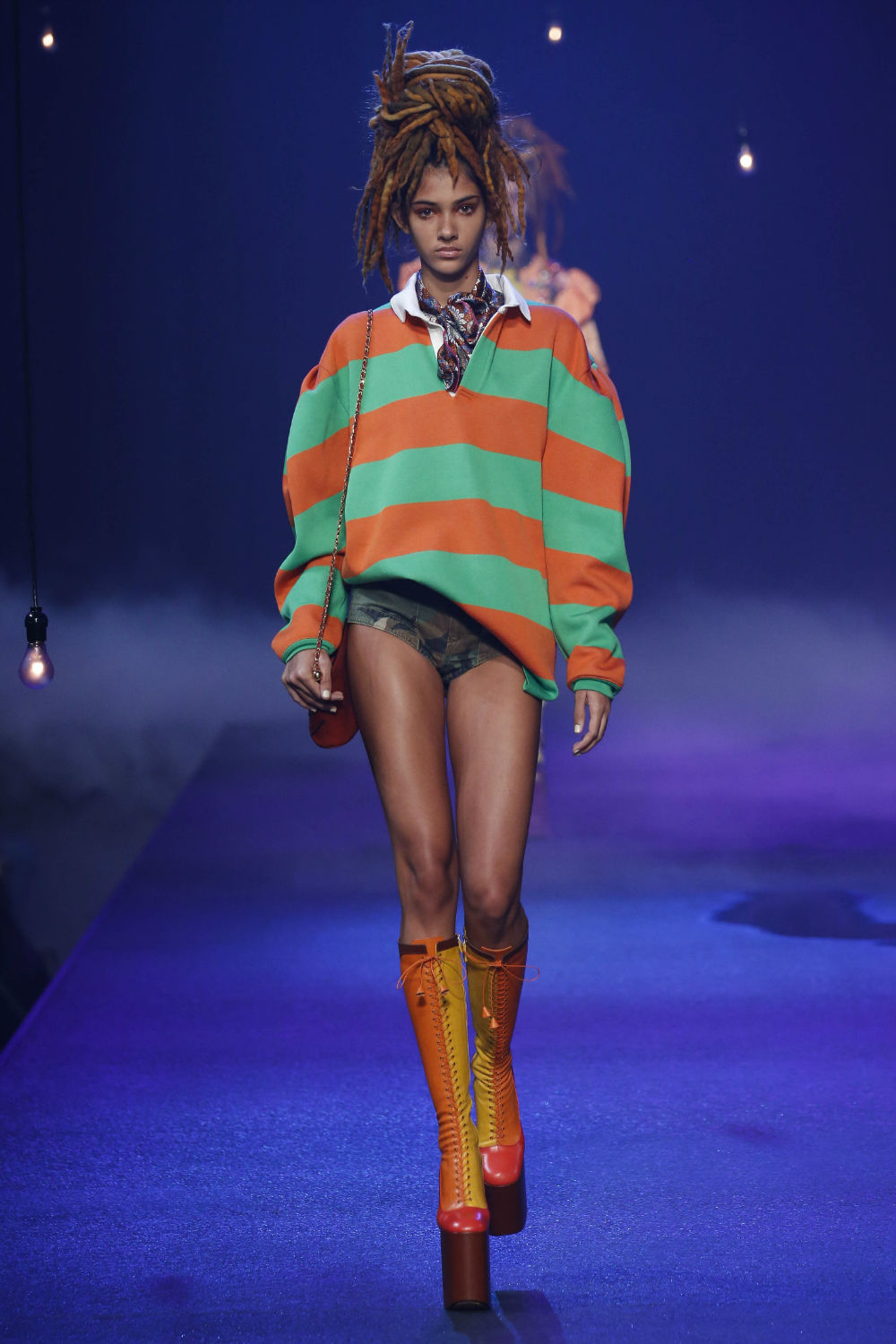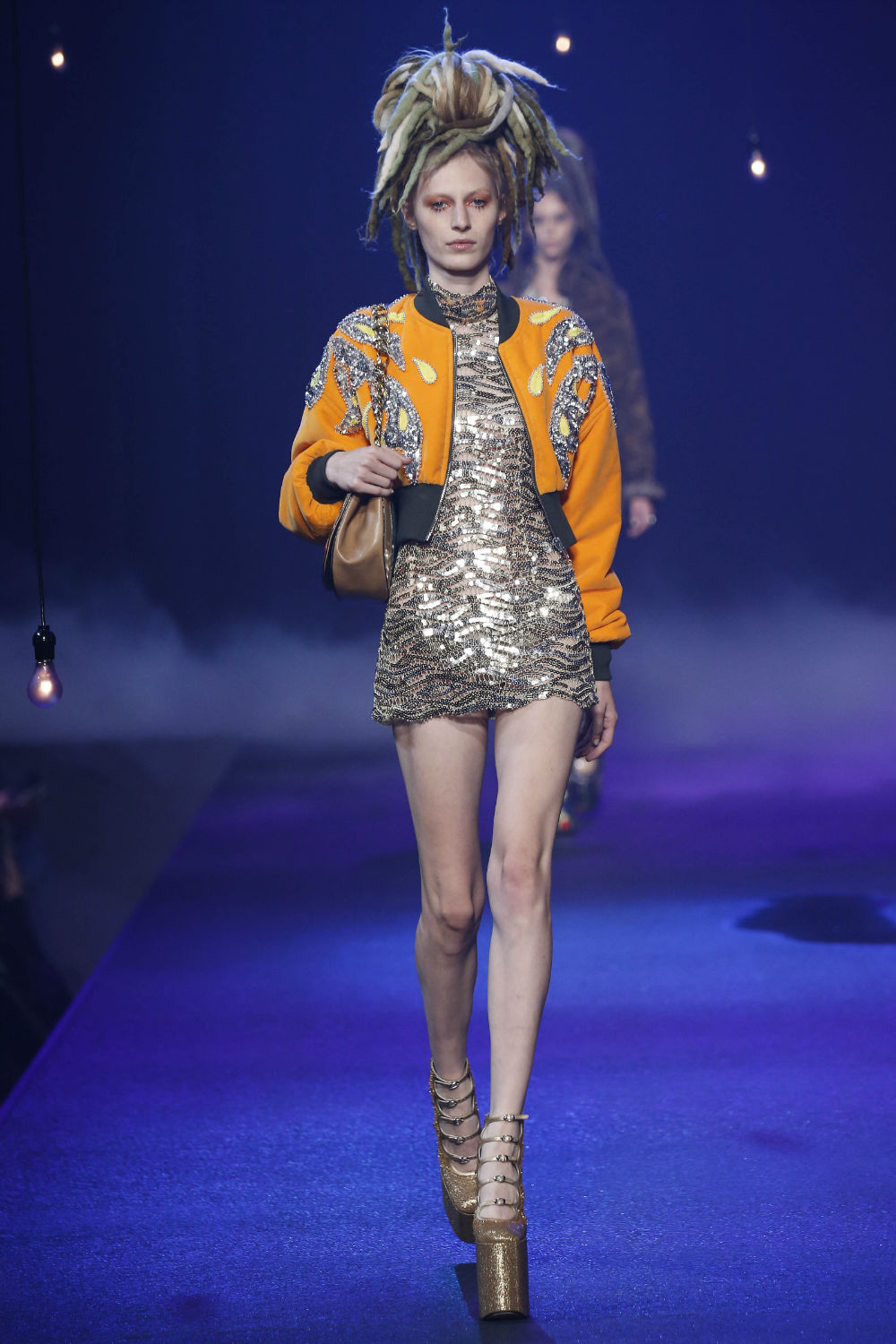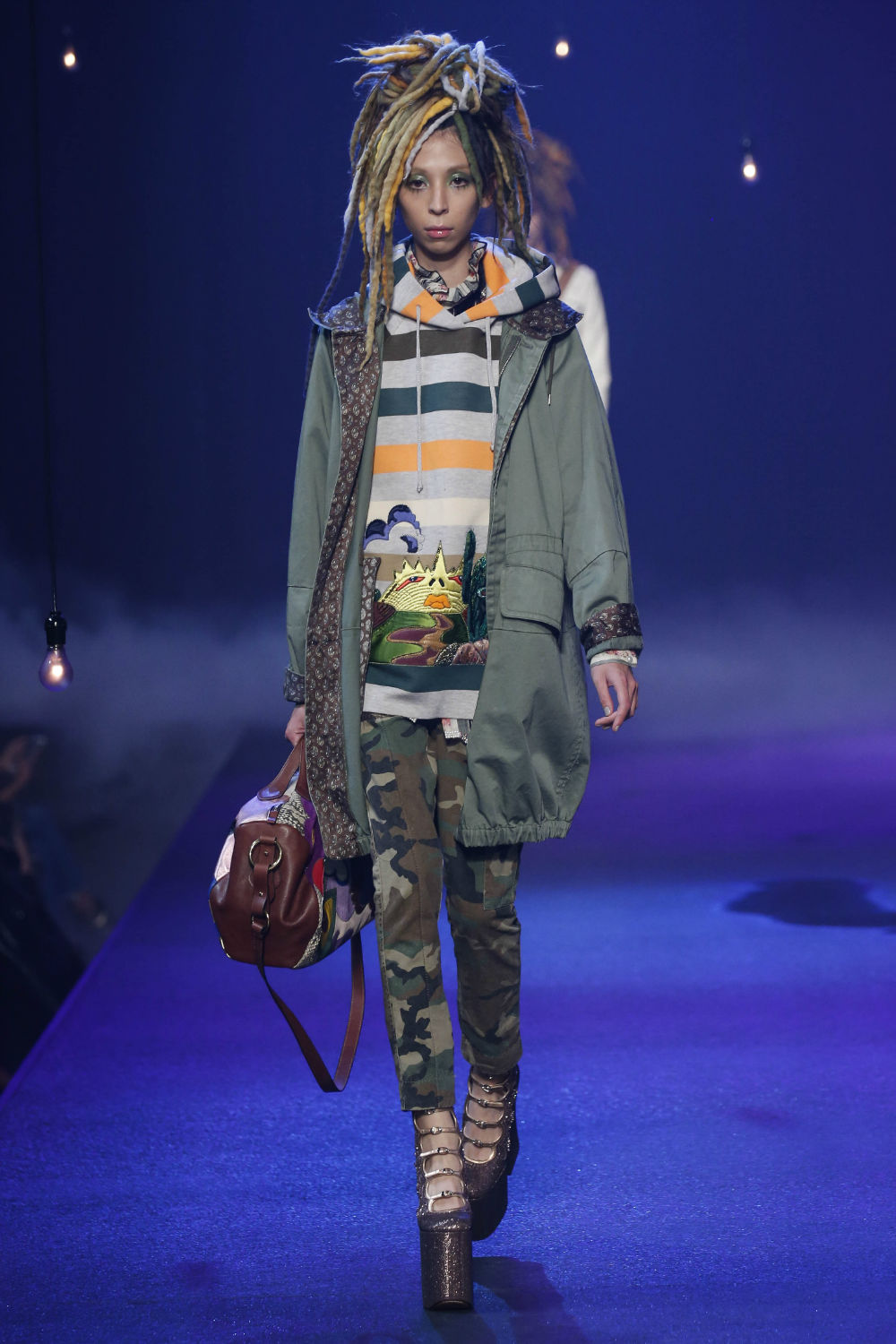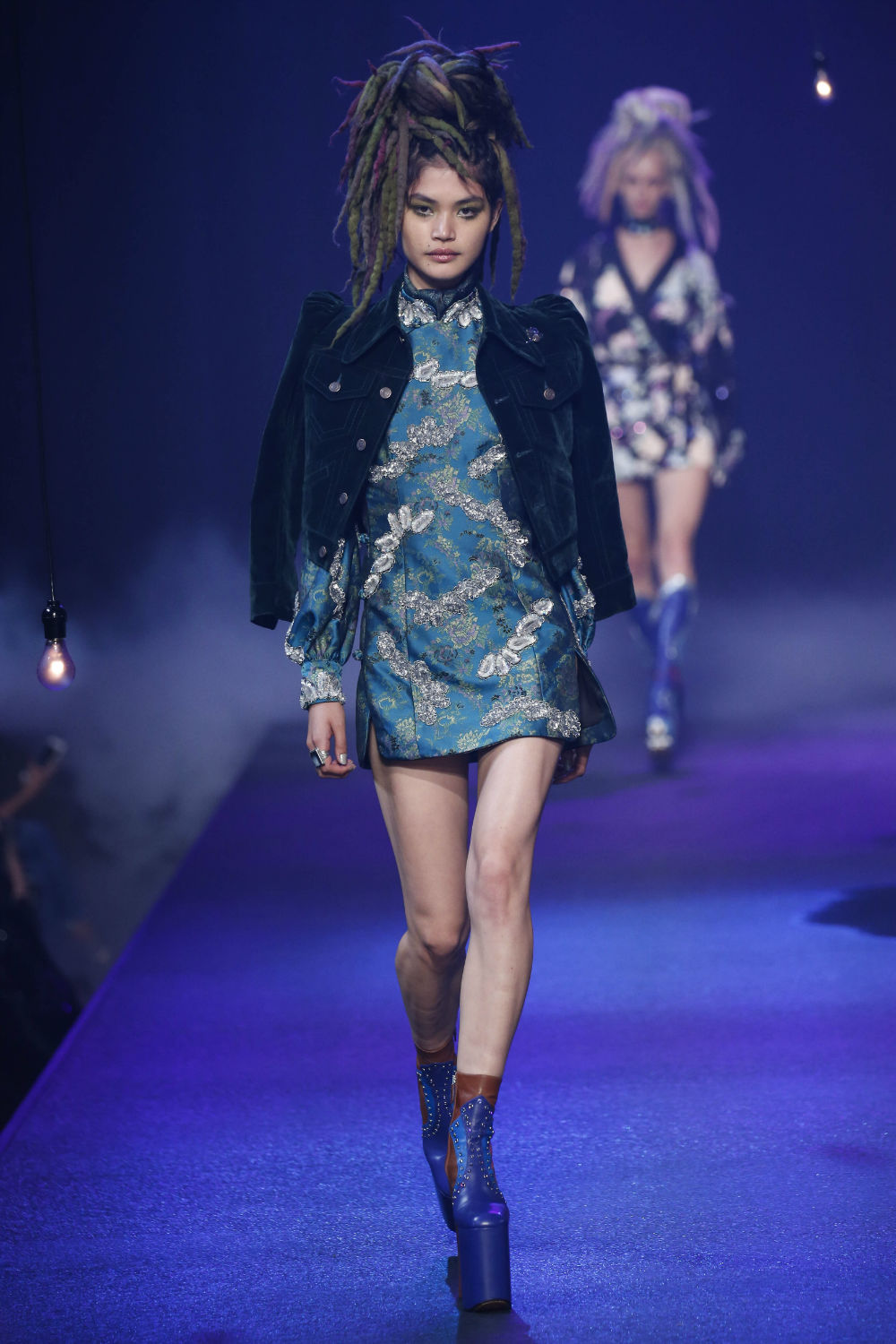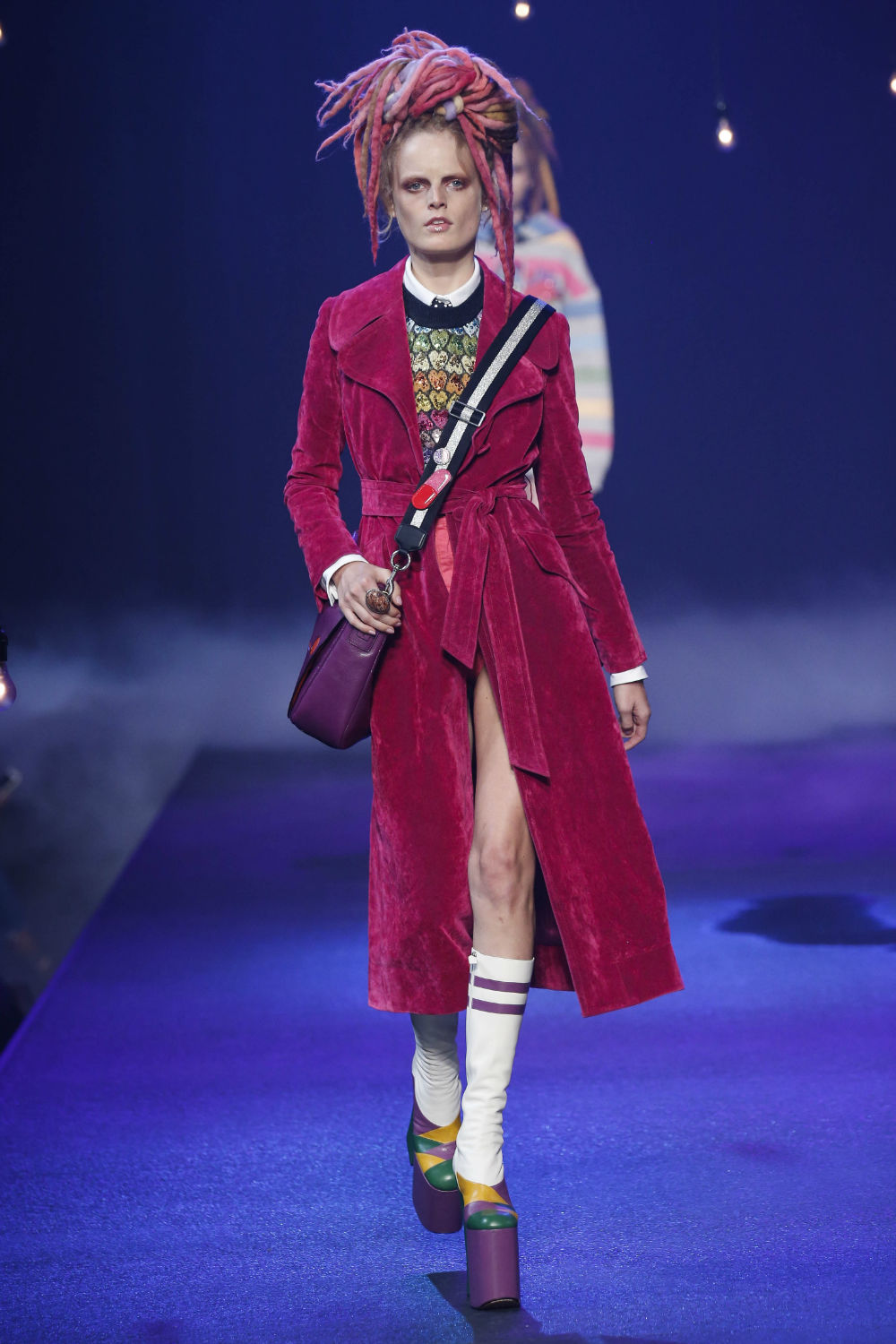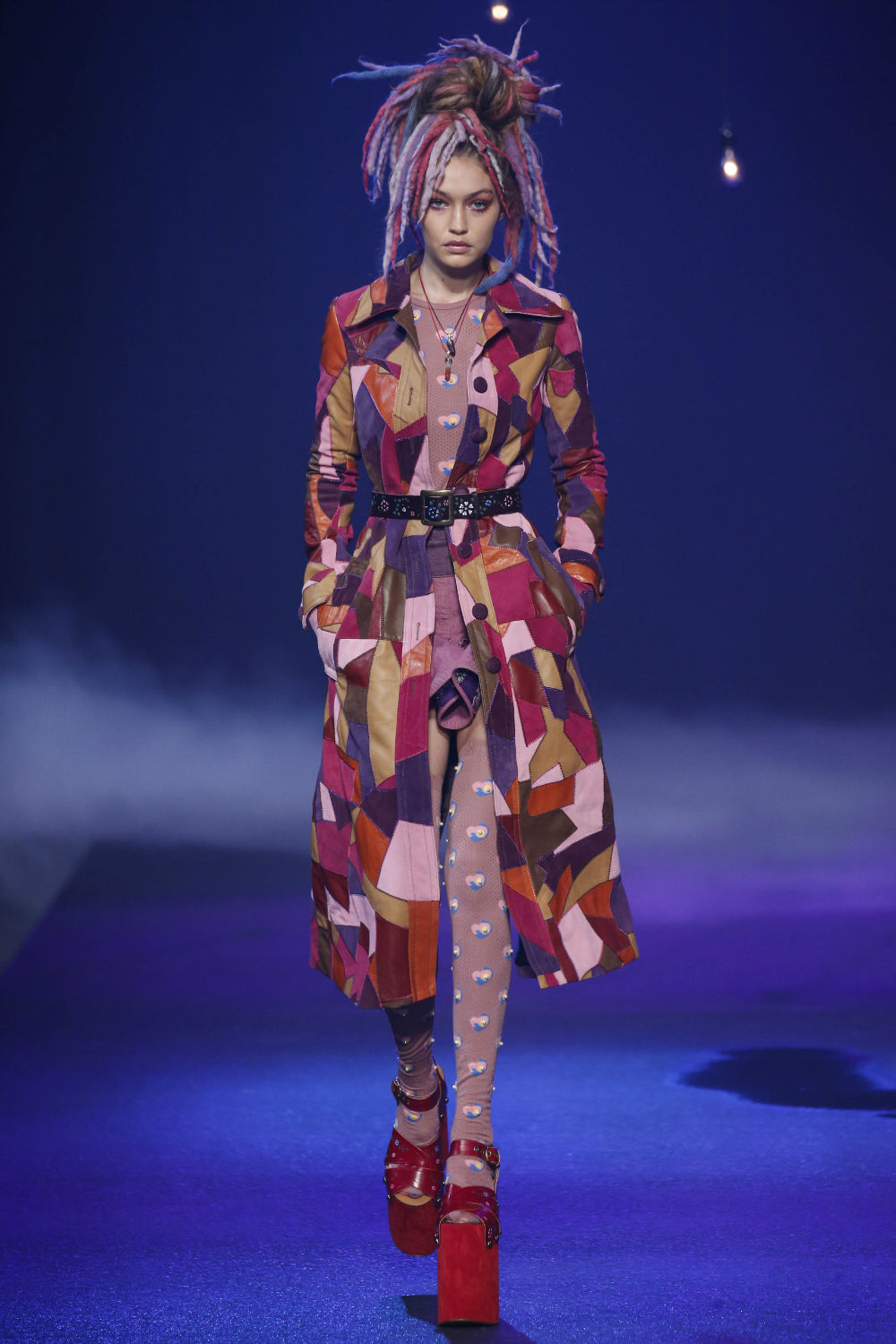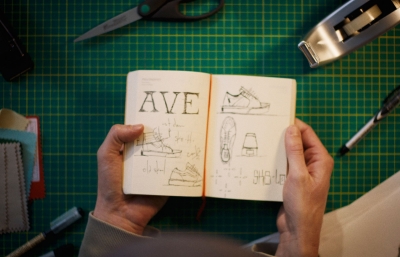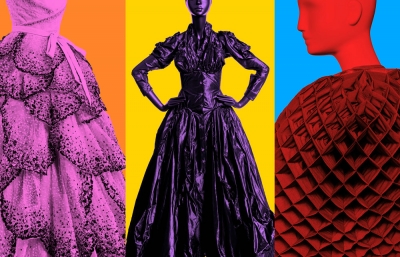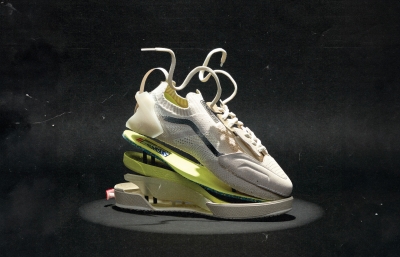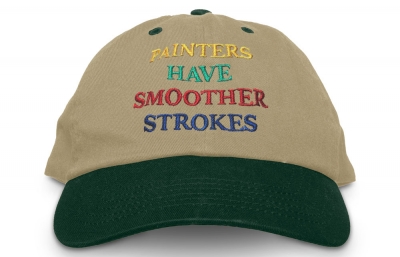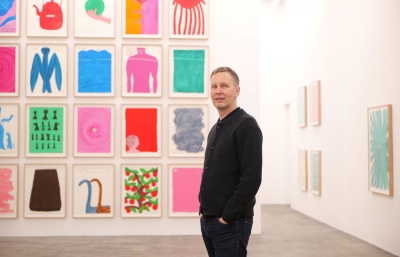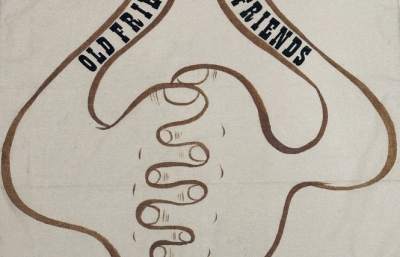“I love frogs, this sort of fairytale frog that becomes a prince, the chameleon who changes colors with his environment.” —Marc Jacobs in conversation with The New Yorker.
Julie Verhoeven leapt from illustration into fashion design with toad and frog-festooned handbags for a Grimm’s Fairytale line for Marc Jacobs and Louis Vuitton. Now the artists have reunited for Spring 2017 in a mirthful marriage of applique, color and collage. Julie was born into a creative family, studied fashion at the Kent Institute of Art and Design, and first worked as an assistant to the electric John Galliano. In addition to fashion collaborations, she has exhibited at the Victoria and Albert Museum, published books, designed album covers, made videos, and recently staged an installation in the bathroom of the Frieze London Art Fair titled The Toilet Attendant… Now Wash Your Hands. Like Jacobs, Verhoeven redefines ideals of beauty as she threads and traverses good and bad taste, having a good giggle while she’s at it.
Gwynned Vitello: Can you describe the surroundings growing up in a house of professional artists? Were the studios at home, and was it more or less assumed that you would join in on all that creativity?
Julie Verhoeven: My home growing up was clean, tidy and modern—full of color and print, a habitat-on-a-budget kind of aesthetic. My mum was an illustrator and worked from the dinner table at home, and my dad was a graphic designer who worked for an advertising agency in London. My parents hoped my brother [painter Leo Verhoeven] and myself would not pursue artistic careers because of the financial instability and vulnerability. But neither of us was interested in much else.
I know you’re a great collector of books so, naturally, they must be a big source of inspiration. What are you favorite types, and are there particular fictional characters that conjure a special vision for you?
I like secondhand picture books, the more obscure and dodgy, the better, and I don’t like to spend more than £20 per book as a rule. I have lots and lots, but these are still never enough when I start a project. I still go the university libraries hunting out more. I’m less interested in fictional characters because I really only engage with pictures and avoid the text.
What do you teach at art school and how would your students describe your classes?
I teach womenswear for the master’s fashion program at Central Saint Martins, one-to-one tutorials, generally. I don’t know how the students would describe our chats, but I hope they are not considered dull, passive or without humor!
Do you think there is a characteristic unique to how the English dress? By the way, when I was in London last, I couldn’t believe how turned out the men were!
I think the British are just more accepting, accommodating and embracing of eccentricities in dress. I find this when I travel and am always keen to get home and feel more comfortable. It’s a good time now to be male. I’m happy to see men’s wardrobe moving into more of a dandy-esque attire and less historically conventional.
Pop psychology might designate brown as the color of conservatism and purple as denoting creativity. Do particular colors transmit a particular message for you, and do you have a favorite—or favorites—in different settings?
In this collection, for example, the colors say “happy.” Working in applique means you have to be more reductive and direct and make choices, so consequently, happy won... tinged with the underpinning of the unhinged.
I love color and how color can rile and offend people, but equally provoke positive, warm emotions. I have numerous favorite color combinations and try not to become too comfortable or complacent with these choices. There is no color I dislike, except maybe white, as it has issues for me. I’m naturally clumsy and careless with living and eating!
Can you create in quiet, or does music feed your process? Have you ever worked with rock musicians, theater or ballet?
Quiet is the enemy for me! I feel sad, dormant and lackluster without music and noise—too much empty time to allow bad thoughts to enter my head and consequently produce nothing. I’ve worked with Primal Scream, Graham Coxon, Fischerspooner and Suga Babes, but not nearly enough. I am now in a band, though, Felt Tip. We’ve yet to make a sound!
Would you like to design costumes for film?
Yes, please! And sets too, plus the opening titles. I’m greedy for film and stage.
Someone makes a connection through associates or at a party, but how does a collaboration really take place? You meet in a studio or coffee shop, and then what? How often do you communicate?
Yes, a coffee and/or booze meet normally works, where we share thoughts and inspirations. Then it’s really dependent on the dynamic, but normally it’s a couple sessions of bat and ball, back and forth as the work’s in progress.
Marc had the idea to revisit past collaborations, being reverential in a kind of skewered way. I had collaborated with Marc on his Louis Vuitton S/S 2002 collection with a series of fairytale-like patchwork bags and this hippy, psychedelic leaning felt right for Marc to readdress. It felt emotionally driven, a guttural response to “the now.”
With this collection, it started with the idea to juxtapose this heady, fantastic world with the mundane and domestic. I think we mostly just wanted to have fun together and indulge our juvenile, twisted sides. I strongly believe that if you have fun producing something that radiates, it therefore attracts.
How would you describe Marc Jacobs as compared to other collaborators?
With Marc, the process was intense, fast paced and frenetic. I really didn’t want to disappoint him, and this fear of failure was the driving force for me. The major point of difference with Marc is that you really feel Marc’s emotional connection to his work, his determination and desire to produce something relevant and poignant. It felt a little bit mischievous too, but we didn’t need much encouragement in that department. Marc encouraged me to work with this sense of abandonment, a visual free-falling, which felt fabulous.
Is there a minimalist bone in your body? Gray would be a stretch, but have you done head-to-toe black? I think color and texture signifies life force for you.
I strive to produce minimalistic work with a direct punch, or that is my goal. I’m yet to get anywhere close to achieving this. With regards to dressing, I have, and do occasionally, sport a black look, but I feel like it’s a waste of a day. With regards to grey, I’m too pallid to carry the color... a walking corpse.
----
Originally published in the April 2017 issue of Juxtapoz Magazine, on newsstands worldwide and in our web store.

